THE 2021 MXA 250 FOUR-STROKE SHOOTOUT: ALL SEVEN BIKES IN ONE TEST
GASGAS MC 250F vs. KTM 250SXF vs. SUZUKI RM-Z250 vs. YAMAHA YZ250F vs. KAWASAKI KX250 vs. HUSQVARNA FC250 vs. HONDA CRF250
First an explanation. MXA elected not to complete our 2021 250 four-stroke shootout until we had all seven new bikes. That seemed like a good idea when we started testing the first batch of bikes, but the Suzuki RM-Z250 and GasGas MC250 kept getting delayed. But we stuck with our plan, mostly because we had pushed the timetable to the limit already. So, once we finally got the last two bikes, we chose to finish the 2021 MXA 250 Shootout with due diligence paid to the two late arriving bikes. Since you are reading this shootout on the internet, you probably wondering what took so long. That’s simple, we didn’t want to do a 2021 250 Shootout with only four or five bikes. If only for historical reference, we wanted to test all seven bikes, dyno all seven bikes, weigh all seven bikes and compare all seven bikes at the same time. That took time. However, the 2021 MXA 250 Shootout did come out to magazine readers, digital subscribers and print subscribers of Motocross Action two months ago (back in late March). If you didn’t see it or don’t remember who won, that is because you didn’t read the paper version of MXA. We put all new tests in the print version first—the internet version comes later. That is the benefit of subscribing to the print edition, you see every bike we are testing two months earlier than you see it on the internet.
Hardcore testing is rooted deep within MXA’s DNA. It is who we are at our core. Just as Bonnie Parker and Clyde Barrow robbed banks, we test bikes. It’s what we focus on. Yes, we have a YouTube channel, Facebook page, Twitter account, Flipboard page, chat group, MXA video department, and send photographers and editors to cover the Supercross and National series, but all we really want to do is ride, test and report on modern motocross tech.
We are on every social media platform, but we aren’t fans of the current climate of the digital age that requires the endless short-form content that Millennials and Generation Z are into. Something must have happened between the Baby Boomers and Gen-Z, because the content consumed by the current generation is short enough for a goldfish to remember. It is empty-calorie content. Call us Old School, but we love long-form content. We want you to know what we know — all of it, not just the bite-size stuff.
We don’t rush our tests, short circuit the process or cut corners to be first to get our tests and shootouts to you. We want to use its test bikes the way you would, not for one or two days, but week in and week out. We use the same test protocol for all our bikes, and along with the four better-known MXA test riders (Jody Weisel, Daryl Ecklund, Dennis Stapleton and Josh Mosiman), we have seven endurance test riders whose job is to race week in and week out. We want hours on our test bikes—race hours!
Once we feel like we know enough or, in the case of the “2021 MXA 250 Shootout,” have lots of time on all seven bikes, we present it to you in a single, cohesive shootout. Not a shootout based on six inexperienced riders spending a day or two on the seven bikes, but a shootout based on 11 MXA test riders spending months racing the bikes. After all, they are race bikes. Once we think we know enough, we put it all down on paper, and that is what you are holding in your hand today. We have also included the complete tests of all seven bikes—all you have to do is click on them. Enjoy.
THE 250 CONTENDERS
2021 GASGAS MC 250F
WHY SHOULD THE GASGAS MC 250F WIN THIS SHOOTOUT? In essence, the MC 250F is a KTM 250SXF without the bells and whistles. It offers everything that makes the KTM 250SXF a great bike, such as the WP XACT air forks, chromoly chassis, Brembo brakes, hydraulic clutch, electric starting, light weight and potent-but-restricted engine at an $800 discount. Without the map switch and resonance chamber, it saves a pound over the 250SXF, making it the lightest bike in the class at 217 pounds, which is more than 10 pounds less than the a large portion of the Japanese-made bikes in the class. We applaud light weight because it costs big money to shave weight without sacrificing structural integrity.
The MC 250F offers the same suspension components as the 250SXF but with a much plusher setup that provides more comfort, although there is more fore and aft movement, especially for faster riders. Fortunately, the bottoming resistance is good for how soft it is. The engine’s power is muted by 1-1/2 horses at peak in comparison to its brother the KTM 250SXF. This has little or nothing to do with the engine specifications. It is a byproduct of GasGas’ closed-off airbox smoothing out the delivery, making the MC250F easier to ride. If you want the excitement of the 250SXF, you can buy an Acerbis vented KTM airbox cover, or drill holes in the stock cover. It will be the cheapest horsepower you will ever buy. The combination of a plusher ride, smoother power and lower cost makes the MC 250F the perfect weekend warrior machine, which is why it should win this shootout.
WHY SHOULD THE GASGAS MC 250F LOSE THIS SHOOTOUT? The MC 250F is the base model of its two brothers, the 250SXF and Husky FC250. The Austrian juggernaut detuned its least expensive base model (the GasGas MC 250F) in comparison to its top-of-the-line Husky FC250. Why? What business sense would it make for KTM to makes its cheapest bike better than its high-priced offering Husky and KTM offerings? FC250 and 250SXF buyers are happy that they get more for paying more. With the closed-off airbox cover and lack of a resonance chamber on the head pipe, the MC 250F is down on peak horsepower and fifth out of the seven competitors in the peak horsepower wars.
To read the complete test on the 2021 GasGas MC250 Click Here
2021 KTM 250SXF
WHY SHOULD THE KTM 250SXF WIN THIS SHOOTOUT? The KTM 250SXF offers the ultimate racing powerband. Sure, the 250SXF is known for its top-end high-revving bravado, but people forget that it has the second-highest torque number next to its compadre, the Husqvarna FC250, at 20.83 pound-feet of torque. You probably thought the YZ250F would make the most torque, but you thought wrong. The kicker is, on the track, the KTM 250SXF revs faster and gets moving quicker than the dyno king FC250. We forgive you for thinking that the Yamaha YZ250F is the torque king of the 250 class because it comes alive early and with authority, but what riders don’t feel is that the YZ250F is slowly running out of steam as it climbs the rpm range to where the KTM 250SXF is just getting started. And, if you want your KTM 250SXF to have that YZ250F-style of low-end hit, just go down one tooth on the countershaft sprocket. That will give the 250SXF the exciting feel down low without the quick sign off of the YZ250F. The 250SXF doesn’t just have a good all-around powerplant, it offers great brakes, a superb hydraulic clutch, braided steel hoses, excellent handling, an easily usable mapping suite, light weight and improved air fork technology that feels like premium spring forks.
WHY SHOULD THE KTM 250SXF LOSE THIS SHOOTOUT? KTM is not a company that rests on its laurels. It has been at the forefront of innovation for a decade, always pushing the envelope and being one step ahead of the competition. But, the KTM 250SXF engine has remained virtually unchanged since 2016. Yes, it is a force to be reckoned with, but six years is a long time for any engine to go without innovation. Tthe Austrians will unveil a totally new and improved 250SXF four-stroke engine for the 2023 model year. The fact that a new engine is on the way is a good reason to consider delaying your purchase of a 2021 KTM 250SXF. But, if you can’t wait, no sweat. There isn’t much to complain about on the 2021 KTM 250SXF, but there are a few peccadilloes that tend to bug us: (1) The spoke by the rim lock comes loose all the time. (2) The plastic shock preload adjuster needs beefing up. (3) The fork’s compression adjuster hurts your fingers. (4) We prefer the handling characteristics of the lower chassis on the Husky FC250, even though the suspension settings are identical.
To read the complete test on the 2021 KTM 250SXF Click Here
2021 SUZUKI RM-Z250
WHY SHOULD THE SUZUKI RM-Z250 WIN THIS SHOOTOUT? The Suzuki RM-Z250 has gotten a bad rap. Riders don’t even give it the time of day. It is the laughing stock among social media junkies. But, if you can look past the social fog and just ride the bike, most riders are surprised by what the RM-Z250 has to offer. We aren’t sugar-coating the RM-Z250, we know that it is the lowest on the horsepower totem pole, doesn’t have electric start like its competition, and is so stiffly sprung that no one under 200 pounds could get full travel from the forks. Paradoxically, MXA test riders like the RM-Z250 and invariably say good things about it. Why? They feel like they are going really fast on it. The low-to-mid power is light and perky. It is easy to get into the meat of the power. The handling is agile, and it turns great. The bike is easy to ride to its full potential. You can override the bike and still feel like you are in perfect control. Sadly, this is also why you feel so good riding a 125cc two-stroke. Every test rider worth his salt knows that slow bikes handle better, slow bikes make a rider feel like a hero, and that slow bikes aren’t slow until they come up against a faster bike, which unfortunately is every other bike in the “2021 MXA 250 Shootout.” This is the perfect bike for a weekend warrior looking for a good bike at a low entry fee.
WHY SHOULD THE SUZUKI RM-Z250 LOSE THIS SHOOTOUT? If you read why the RM-Z250 should win this shootout, you will also understand why it should lose. It is heavy, slow and dated. Need we say more? Sure, why not? We want to be nice to the RM-Z250 because we love riding it, but we hate racing it. It is at a 5-horsepower disadvantage to the Husqvarna FC250 right out of the gate. Yes, it is $1500 cheaper than the Husky FC250, but that amount of cash won’t put a dent in the RM-Z250’s horsepower deficiency. You would need a cool $5000 to build an RM-Z250 engine that makes as much horsepower as the class leaders. Once you get the engine dialed, you will still be short an electric starter, hydraulic clutch and forks that would actually move under the weight of the typical 250F racer. If Suzuki keeps going like this, yellow bikes will become a footnote in motocross history.
To read the complete test on the 2021 Suzuki RM-Z250 Click Here
2021 YAMAHA YZ250F
WHY SHOULD THE YAMAHA YZ250F WIN THIS SHOOTOUT? The 2021 YZ250F is the most exciting 2021 bike. The robust acceleration at the crack of the throttle is exhilarating, but you wouldn’t think that looking at the dyno runs. The YZ250F performs worse from 7000 to 9000 rpm on the dyno than its predecessor and sits sixth out of seven in overall torque (it gave up low-end for top-end power in 2021). It still matches the top runners on the low end of the powerband on the dyno, and every rider who jumps on the bike loves the perky powerband, as the YZ250F is the only bike of 2021 to offer that quick come-to-life feel. The chassis and suspension are both workmanlike. The chassis is not only predictable but stable, and the front wheel hooks up like glue. The KYB SSS forks are amazing, as always, and the shock offers comfort for the majority of riders. Not only is the YZ250F exhilarating to ride, it offers great suspension, Wi-Fi maps and a superb chassis. It is also built like a Sherman tank.
WHY SHOULD THE YAMAHA YZ250F LOSE THIS SHOOTOUT? The engine of the YZ250F gives riders the impression that it’s faster than it really is for three reasons. (1) The YZ250F gets moving quickly and keeps pulling until it gives up the ghost at 12,700 rpm. The problem is, after 9000 rpm, the CRF250, FC250, KX250, MC 250F and 250SXF pull harder and further. It just isn’t apparent to testers until they go head-to-head against the competition. The lack of torque hinders the YZ250F’s mid-range gusto. (2) For 2021, Yamaha vented the top airbox cover of the YZ250F. This makes the reverberation sound extremely loud. Loud engines sound faster than quiet engines. (3) With Yamaha upping the power on the YZ250F engine, it revs faster through the rpm range. Yamaha left the gear ratios the same as last year. These low gear ratios make the engine feel fast, but it is also a nuisance as the power falls on its face, forcing riders to shift more often, even if they don’t want to. Sure, the YZ250F is built strong like a Sherman tank, but it is also bulky and heavy like one as well.
To read the complete test on the 2021 Yamaha YZ250F Click Here
2021 KAWASAKI KX250
WHY SHOULD THE KAWASAKI KX250 WIN THIS SHOOTOUT? In 2020, Kawasaki changed its philosophy on how the KX250 four-stroke engine should run. Kawasaki went from a low-to-mid-style of power to a high-rpm powerplant. Doing this got our attention, but it wasn’t enough to climb the 250 four-stroke ladder. For 2021, Kawasaki upped the ante again on its KX250 engine to produce more pony power at every step of the power curve. On the dyno from 6000 to 8000 rpm, it only moves slightly faster than the CRF250, but when the tach hits 8500 rpm, the KX250 starts to outperform the YZ250F and makes its way into Austrian territory, hitting the Austrian’s front line of defense, the GasGas MC 250F, at 9200 rpm. Then, it fights through the FC250 and 250SXF with ease at 9500 rpm. After that, it is clear sailing from 9500 to its peak at 13,470 rpm, where it produces the second-best horsepower in the class at 44.24 ponies. The FC250 squeaks by the KX at 44.36 horsepower after the KX250 signs off. This is a racer’s engine. The KX250 should win this shootout based strictly on its impressive top-end powerplant. It pulls harder on the bottom than what the dyno reads and moves through the rpm range with authority.
WHY SHOULD THE KAWASAKI KX250 LOSE THIS SHOOTOUT? The 2021 Kawasaki KX250 is a one-trick pony. It has the great high-rpm engine that fast riders want, but Kawasaki missed the mark on handling. The MXA test riders didn’t find the front end’s lack of accuracy to be confidence inspiring. It wanted to push at high speed. The 2021 KX250 and KX450 share the exact same chassis, but they handle completely differently. We tried softer springs, lowered the fork oil height, raised the forks in the clamps and tested every setting in the book in stock trim to make the front end stick. Eventually, the low-end solution was to sit on the gas tank on the entrance to turns to put more weight on the front end. It helped, but there was still room for improvement. The front end felt high at the handlebars and rode high on the track, much like the 2015 KX250F chassis. Every time we found a good fork setting, the rear of the bike suffered and vice versa. The fore and aft balance was hard to figure out. The KX250 loses this shootout because it is a very hard bike to set up. It never felt planted. It was as though the front and rear had minds of their own. Without inspiring confidence, a great engine goes to waste.
To read the complete test on the 2021 Kawasaki KX250 Click Here
2021 HUSQVARNA FC250
WHY SHOULD THE HUSQVARNA FC250 WIN THIS SHOOTOUT? The biggest difference between the 2020 FC250 and the 2021 FC250 is how they handle. For 2021, the WP forks were significantly updated (as were the KTM 250SXF and GasGas MC 250forks), but Husqvarna took a big chance and shortened fork travel by 10mm while using the identical internal fork setting as the 250SXF. The shock valving was the same also, but the geometry of the bell crank, link arms and shaft travel was changed to bring the rear of the Husky down an inch. On the track, these drastic changes turned the FC250 into the best handling bike in its class. The suspension was superior to that of the 250SXF. It held up better, was plusher, and the rear tracked exceptionally well. Every test rider was shocked by how agile the FC250 was at speed. To top it off, the FC250 produces the best peak horsepower and torque numbers in the class. The big power numbers are a little mystifying, because on the track the FC250 revs slower than the 250SXF, KX250 and YZ250F (probably due to its closed-off air box). The great thing is that it is easy to tailor the power. Just vent the airbox cover and change the gearing and you’ll have KTM-style throttle response. The handling characteristics, great engine and premium accouterments are the reasons the FC250 should win this shootout.
WHY SHOULD THE HUSQVARNA FC250 LOSE THIS SHOOTOUT? The Husqvarna FC250 is flawed in one way—its airbox. That may also be why it produces so much peak horsepower while feeling mellow through the midrange. We can’t explain how the bike with the least air coming in manages to channel the limited air supply at high rpm to make the most peak horsepower. Perhaps it has something to do with Bernoulli’s principle. The way the air moves through and builds up in the airbox somehow translates into more power on the dyno. But guess what? Every MXA test rider chooses the optional vented airbox cover, even though it produces less pony power on the dyno. Venting the air box gave the FC250 the exciting feel of the 250SXF engine. If the FC250 had a reason to lose this shootout, it would simply be because of the muted air box.
To read the complete test of the 2021 Husqvarna FC250 Click Here
2021 HONDA CRF250
WHY SHOULD THE HONDA CRF250 WIN THIS SHOOTOUT? The CRF250 has the best ergonomics in its class, even though the cockpit is tailored to smaller riders. It offers supreme comfort and adaptability to every rider who throws a leg over it. An array of riders can jump on the CRF250 without any adjustments and love the feel on the track. This pleasant feel has a lot to do with the plush Showa front and rear suspension. The CRF250 engine is deceiving to riders because it is the quietest in its class due to its clumsy dual-exhaust system. The power is slow to build, but once it gets going at 8000 rpm, it charges hard until 11,500 rpm. That would be great, but the KTM, Husky, Kawasaki and GasGas rev to or beyond 14,000 rpm. The CRF250 should win MXA’s 2021 250 four-stroke shootout due to its mass appeal.
WHY SHOULD THE HONDA CRF250 LOSE THIS SHOOTOUT? To start, the CRF250 is overweight. On the MXA scales, it comes in at 227 pounds in a tie with most of the other Japanese brands. It is as though Honda, Yamaha, Suzuki and Kawasaki are competing against each other and trying to ignore the existence of the three Austrian brands. Proof? The CRF250 is as much as 10 pounds heavier than the lightest of the Austrian steeds. On the positive side, the CRF250 feels light on the track because Honda has positioned the mass better than any other bike in the class. Honda’s engineers have worked for the last four years on improving the CRF250’s top-end power at the cost of low-to-mid usability. They worked on a shoestring budget that didn’t allot them the millions of dollars it would take to shed the 10 excess pounds and flesh out the powerband from bottom to top. Honda did the best it could to disguise the tonnage in motion, but the excess weight hinders acceleration, top speed and braking performance. The CRF250 is easy to ride due to its non-assertive low-end power. Honda needs to broaden the engine’s power profile and make it more exciting. The bike feels sluggish, even though it isn’t as slow as it feels. MXA test riders like everything about the 2021 CRF250 except the lack of transition power into the midrange and the 227 pounds of added baggage.
To read the complete test of the 2021 Honda CRF250 Click Here
BEST BARGAIN 250 OF 2021: GASGAS MC 250F
The 2021 Suzuki RM-Z250 is the cheapest among its fellow classmates, but the question is, is it the best bargain? In one way, yes, if you are basing this on cost alone. The RM-Z250’s MSRP is $100 less than that of the CRF250, but for that hundred large, the CRF250 gives you better suspension, an electric starter and more pony power. I think most racers would be willing to spend the extra Benjamin when factoring in the technical attributes. You might be thinking that the CRF250 won “MXA’s Best Bargain 250,” but you would be wrong. We were just illustrating that spending less money isn’t always a bargain. If you disagree, then you must have never tried to save a buck by buying tools from Harbor Freight. These purchases may save you money in the short term, but they will cost you more down the road. This is why the 2021 GasGas MC 250F wins this category. This bike ranks fifth in cost, but in our book, first in value. You get our “250 Motocross Bike of the Year’s” potent engine, great air suspension, hydraulic clutch, electric starting, Pankl transmission, amazing handling, phenomenal brakes and more at a $900 discount. True, it doesn’t have the cool map switch, billet clamps or resonance chamber on the head pipe, but those are more bells and whistles than real needs.
The 2021 GasGas MC 250F is the go-to bike for privateer race teams, as it offers the best engine and chassis in stock trim at a fraction of the price, bringing the cost of their builds down. We know most of you aren’t Pro riders, but it is worth buying the GasGas if you are looking for a bargain that you don’t want to dump added money into. The MC 250F’s biggest flaw is the detuned engine, but it’s only a flaw if you are looking for more power. GasGas restricted the airbox with its cover to hold back the powerful engine and make it more user friendly. Luckily, you can fix that by drilling holes in the airbox cover or buying a KTM vented cover that will fit on. The MC 250F is a bargain, as it offers a great overall package at a solid price.
BEST ENTRY-LEVEL 250 OF 2021: HONDA CRF250
There are many good entry-level 250F bikes on the market right now. For a long time, the RM-Z250 has been the bike that we steered neophyte riders towards. But, in stock trim, the RM-Z250 is losing its luster for less-skilled riders. The suspension is built for an AMA Supercross Pro (not little Johnny), and the now old-school kick-starter is a nuisance. The RM-Z250 does have a polished low-to-mid powerband and excellent turn-in, once the rider fixes the overly stiff front forks; but, when you up the pace on the RM-Z250, it will start to shake at speed.
For the MXA wrecking crew, there is one bike that sticks out as the best entry-level bike for 2021—the 2021 Honda CRF250. Hands down, the CRF250 offers the most comfort with great ergonomics, plush suspension and a comfortable chassis. In the past, the CRF250 languished because of its lackluster engine performance. But over the last three years, Honda’s engineers have refined the engine to make it faster and more responsive. Its 42-horse powerplant is more than powerful enough for any entry-level rider, or a rider who is stepping up from the mini class. The power may be reluctant to get moving off the bottom, but this is not the end of the world for riders who are new to the class. The power is extremely metered and smooth from the bottom to the top end.
The CRF250 doesn’t have enough attributes to make it a class winner, but it is easy to adapt to because the power is linear and doesn’t hit too hard at low rpm. The ergonomics are spot on, and the suspension is very comfortable for riders big, tall, short and small. We love the 2021 CRF250, but once it lines up with the blue, orange, green and white competition, its doors will get blown off. The things that make the CRF250 the best entry-level bike also mean that it isn’t good enough in a class where power is king.
BEST WORKING-CLASS 250 OF 2021: YAMAHA YZ250F
It is no secret that Yamaha dirt bikes have a reputation for standing the test of time, but so does the Honda XR650. We appreciate Yamaha creating a durable machine that is still competitive. If you’re the guy who buys a new bike every decade, we are guessing you will sacrifice some handling and power to own a bike that will age along with you. The 2021 Yamaha YZ250F is the best working-class bike of 2021. It has been for quite some time now. It wasn’t too long ago that it was winning our shootouts as well; however, the KTM 250SXF ruined Yamaha’s party with sheer horsepower. Still, the YZ250F is a force to be reckoned with amongst its competitors. We are sure that the YZ250F will cost the least to maintain over time. We have put over 100 hours on some of our Yamaha four-strokes, and when we tore the engines down, the valves were still in adjustment and the piston and crank were still going strong.
Along with the YZ250F’s robustness are its best-in-class Kayaba SSS forks and shock, its exciting and strong power spread, and its superb handling. An average joe can buy a 2021 YZ250F and go straight to the race track without doing a thing to it. Sure, the YZ250F has its imperfections, but most of them can be overlooked once the rider gets the feel of the bike. What do we mean? On the scale, the 2021 YZ250 weighs too much—not too much compared to the CRF250, RM-Z250 or KX250, but way too much compared to the KTM, GasGas and Husqvarna. The YZ250F’s reverse-cylinder engine puts the air box where the gas tank should be. To keep from starving the engine, Yamaha needs a much bigger airbox. Additionally, the YZ250F four-stroke is wider than the rest of the class.
On the plus side, we couldn’t find an MXA test rider who didn’t fall in love with the suspension of the YZ250F. Considering the durability and good price point, there is no bike that deserves to win this category more than the YZ250F.
2021 MXA 250 MOTOCROSS BIKE OF THE YEAR: HUSKY FC250
We are as surprised as you are. We never thought that the Husqvarna would beat out its brother, the KTM 250SXF, but after seven years, Husky has finally done it, thanks to a Hail Mary gamble from the Husky engineers. For 2021, Husky decided to lower the ride height of the FC250 in comparison to the KTM 250SXF. This modification was a game-changer, even though the settings for the forks and shock were identical to the 250SXF settings. The FC250 handled much better than any bike it went up against. It turned sharper, offered better agility and improved handling, created better bottoming resistance and put more confidence in the riders, which made for better and more consistent lap times. We were shocked at the all-around improvements that the lower chassis made; however, the Husky engineers aren’t out of the woods yet.
We complained year after year that Husqvarna’s restrictive air box was holding the engine back. Without this airbox, it would run with the same snappy throttle response and quick rev as the KTM 250SXF. This air issue is still a problem eight years after we first voiced our displeasure with the lack of sufficient airflow. Surprisingly, even the optional Husky vented airbox cover offers less ventilation than the 250SXF’s vented air box. The powers that be obviously have a reason for this, which we can’t wrap our heads around; however, if they intended to suppress the FC250 in comparison to the 250SXF, that sure backfired on them this time around.
We don’t like that Husky’s engineers (or the head office) purposely tame the FC250 so that the home-team brand (KTM) will have an advantage. The joke is on KTM, because the overall handling of the FC250 makes up the difference and then some. It is true that we always say that “power is king in the 250 four-stroke class,” but with the FC250 and 250SXF powerplants being identical (save for throttle response), the improvements in handling outweigh the small power disadvantage on the track.
The 2021 Husqvarna FC250 is “MXA’s 250 four-stroke Motocross Bike of the Year,” as it offers the best brakes, handling, engine, hydraulic clutch, peak horsepower and torque in its class. Best of all, its WP XACT air forks give riders the confidence to win races.


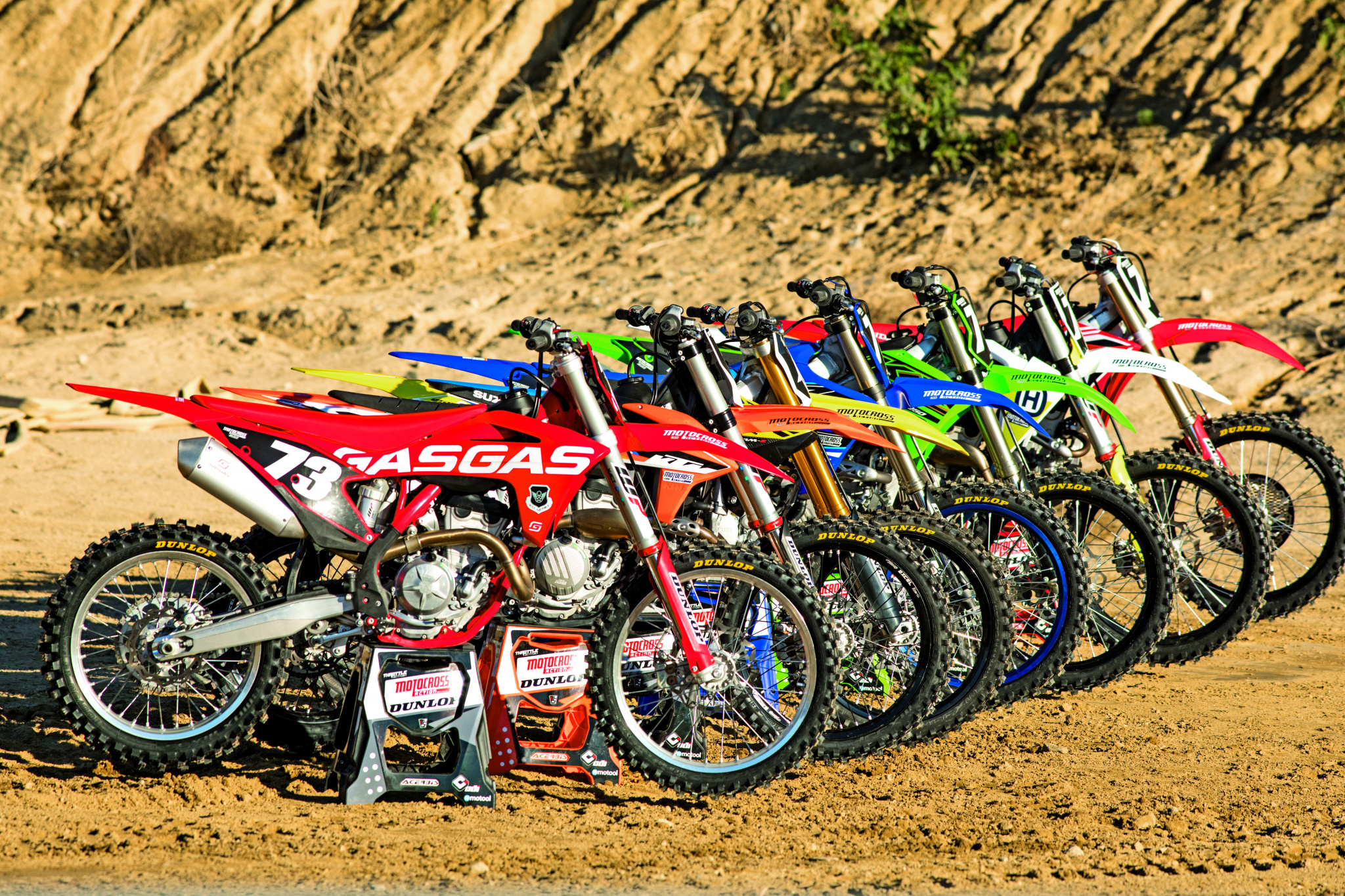
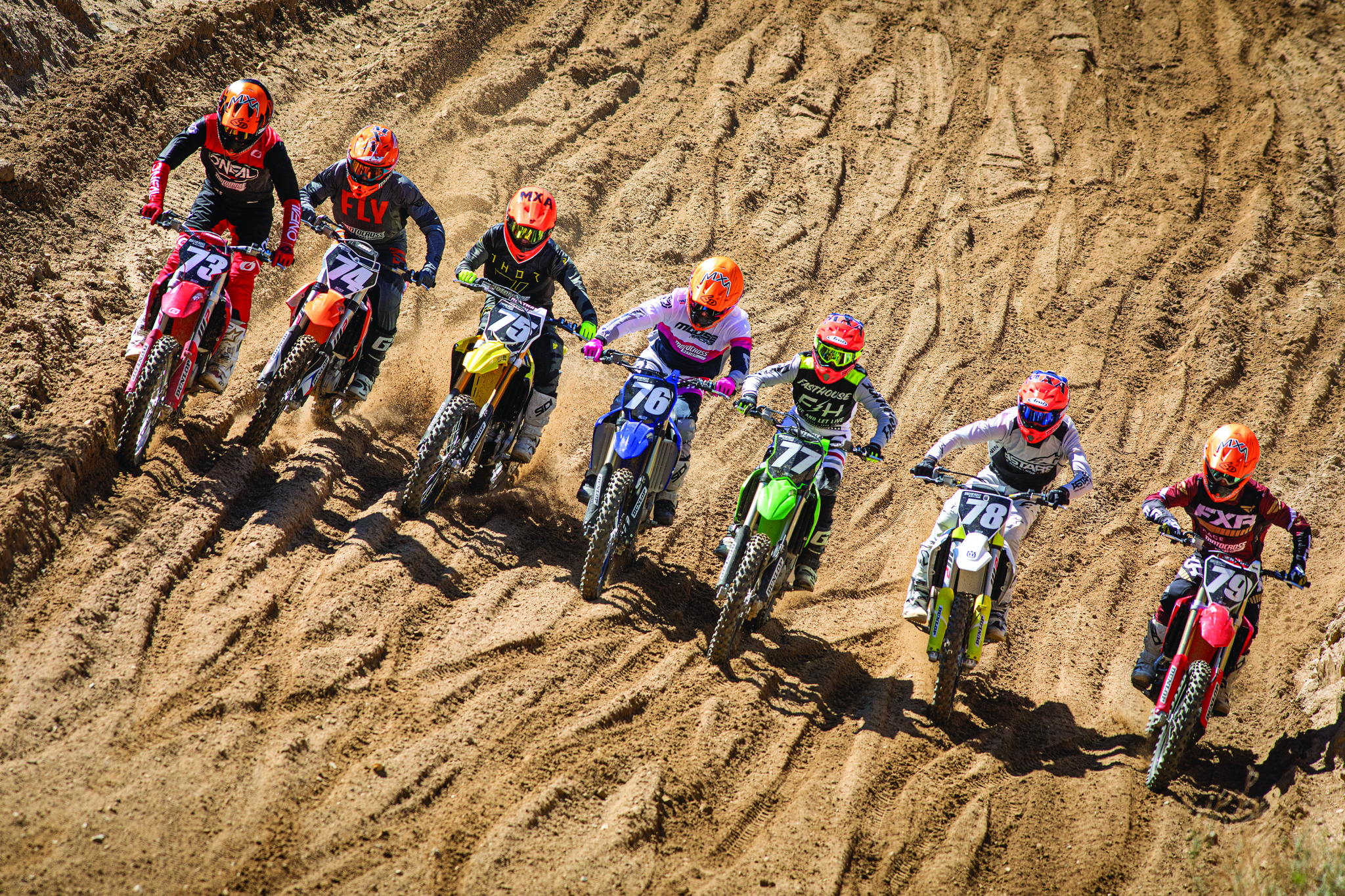
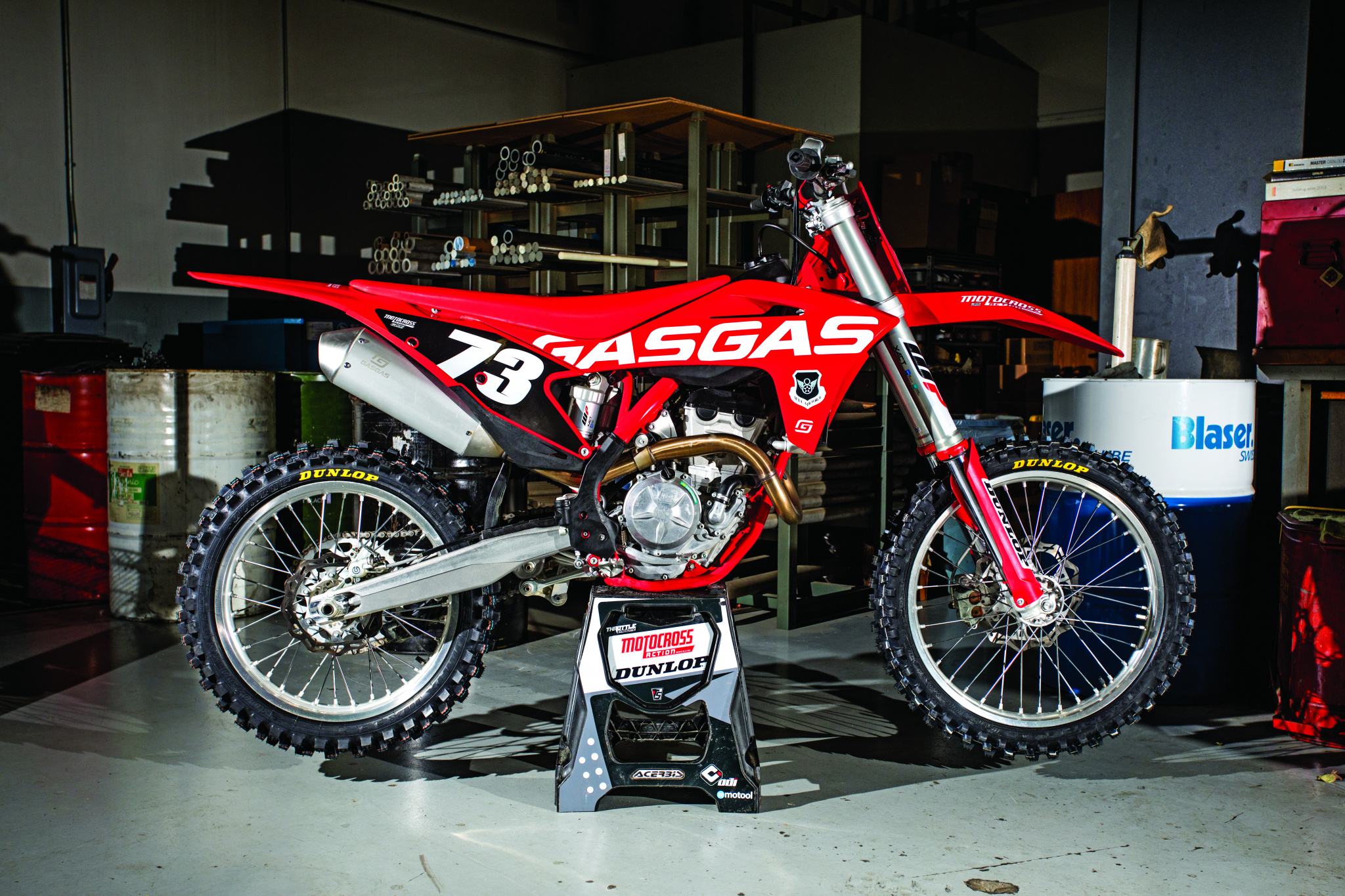
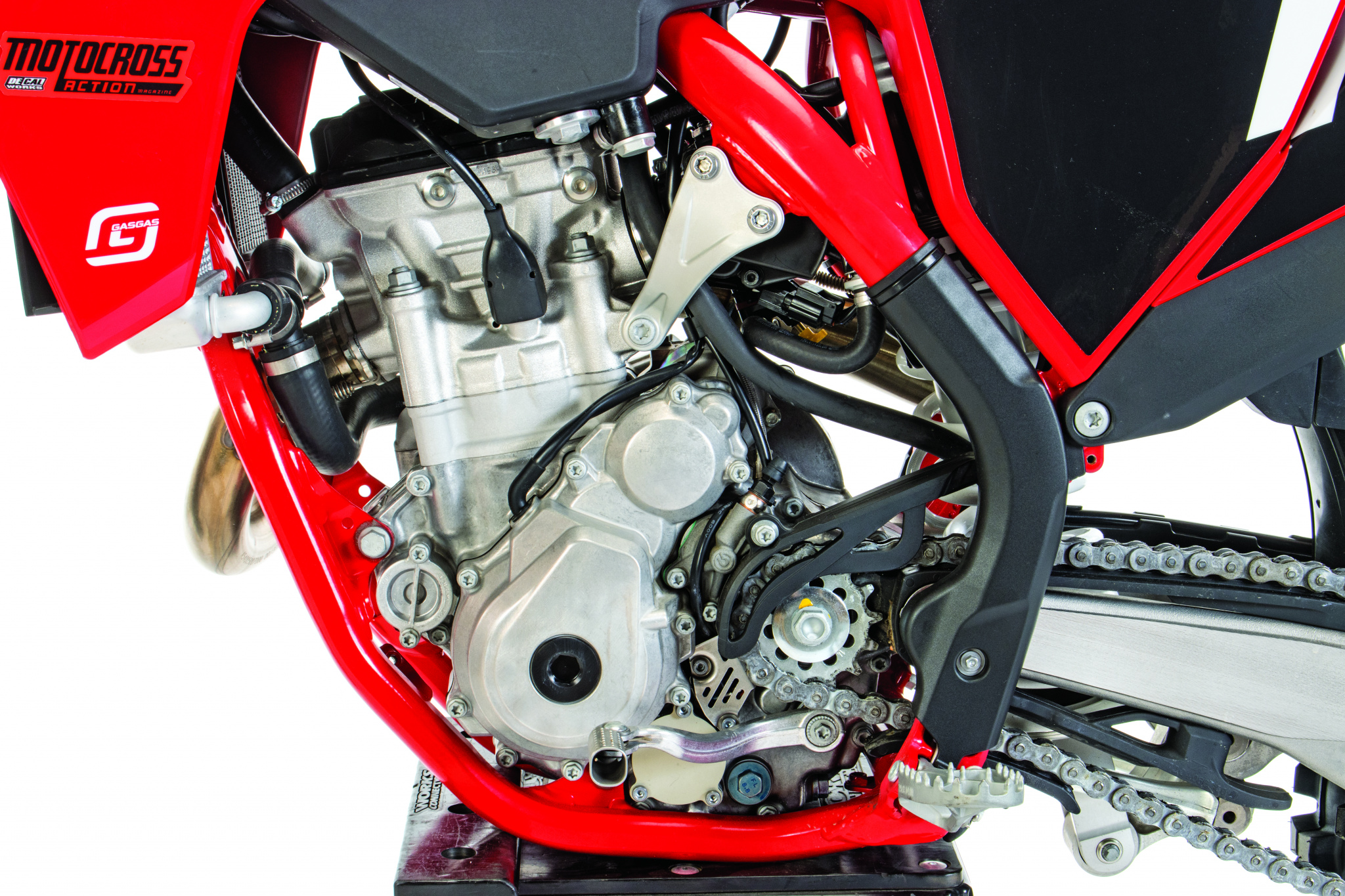
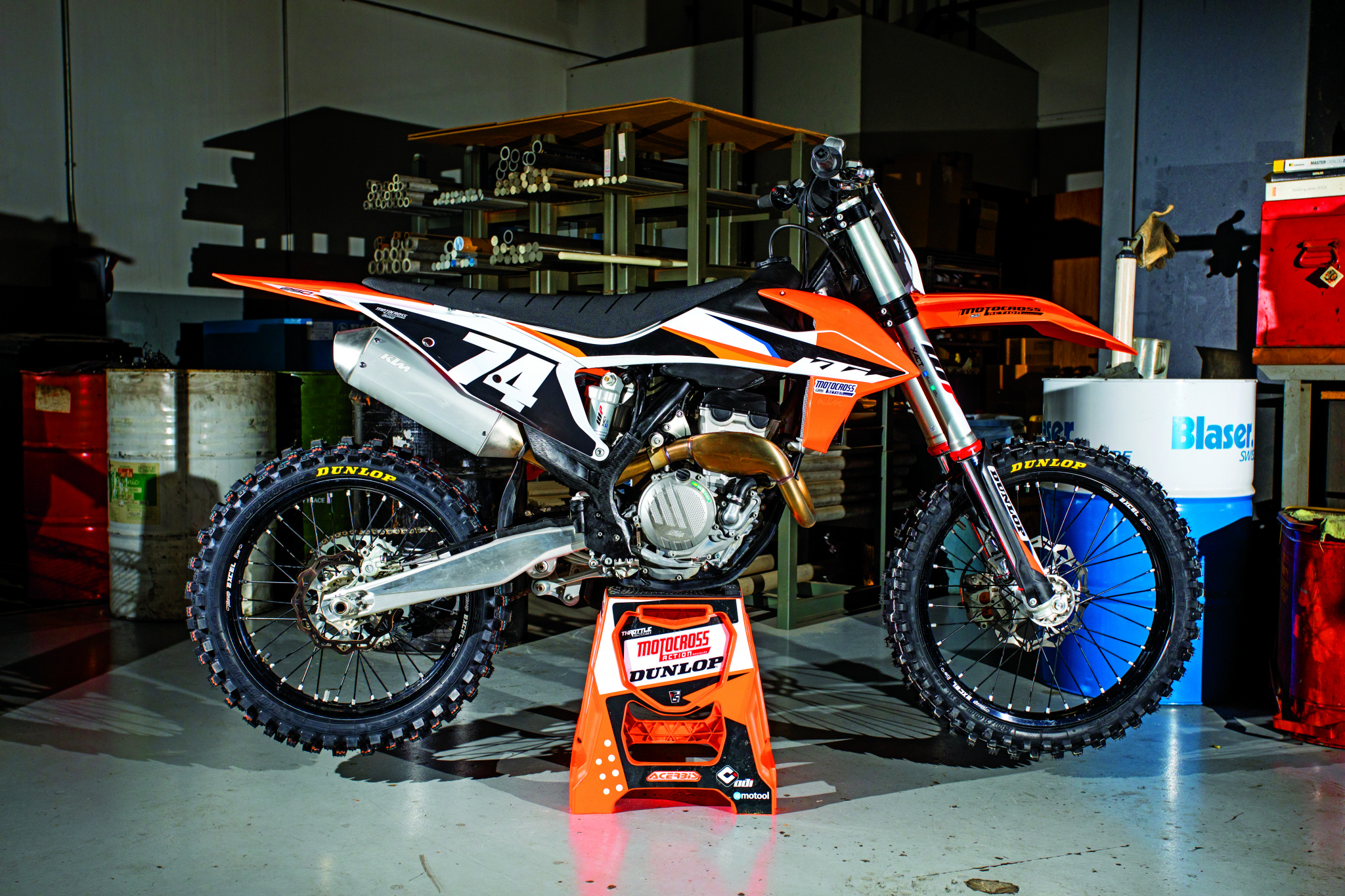

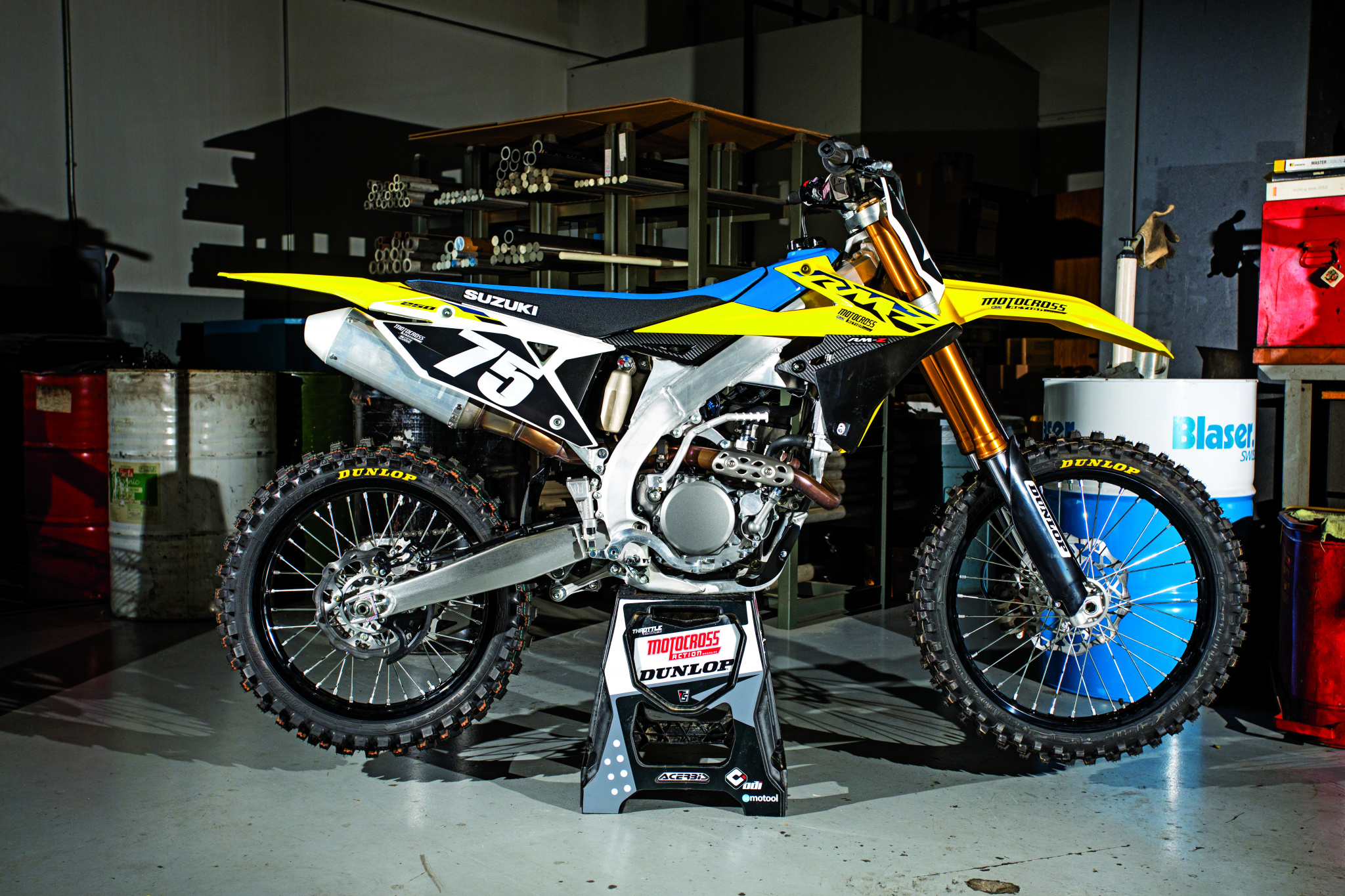
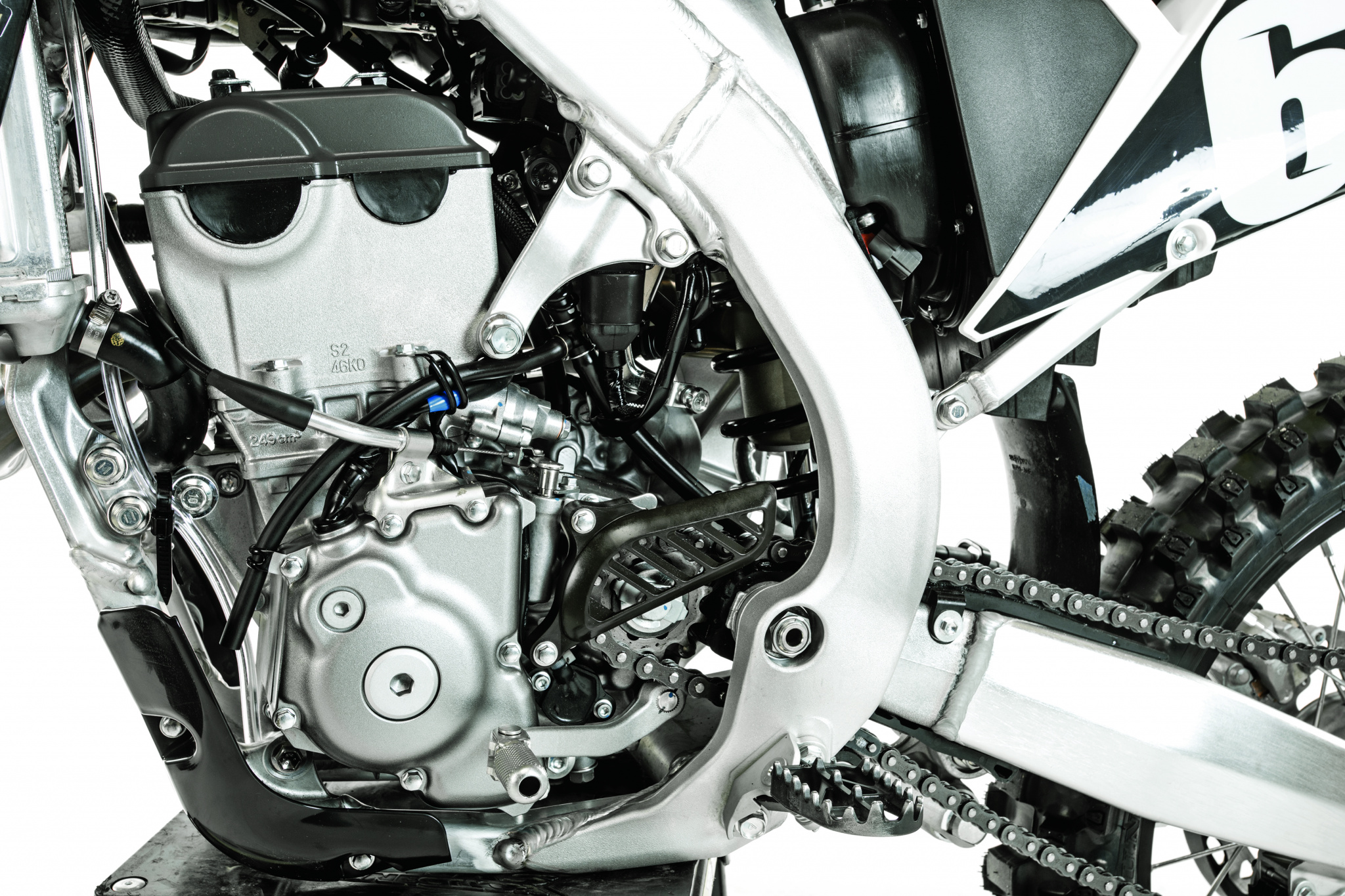
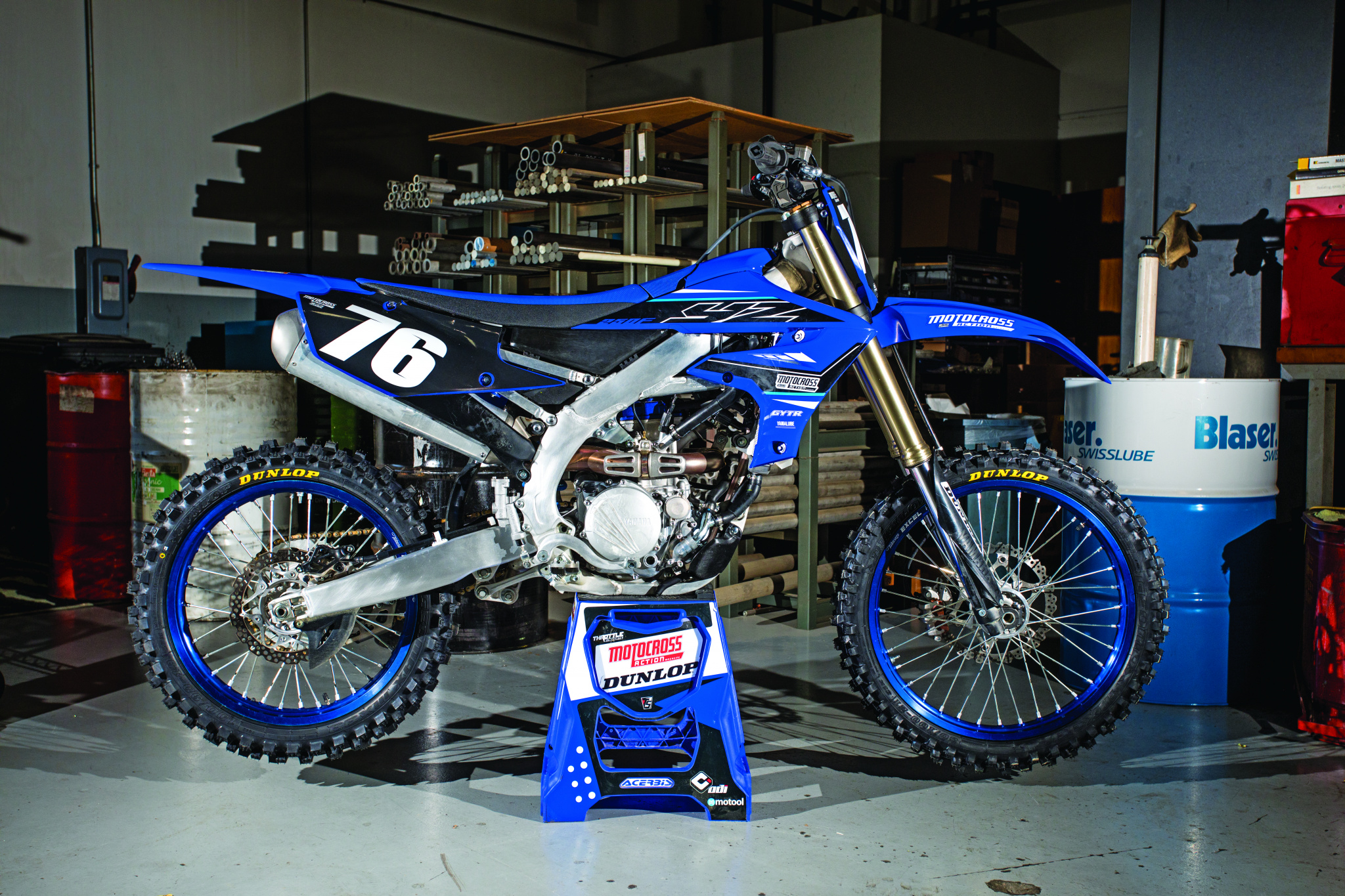
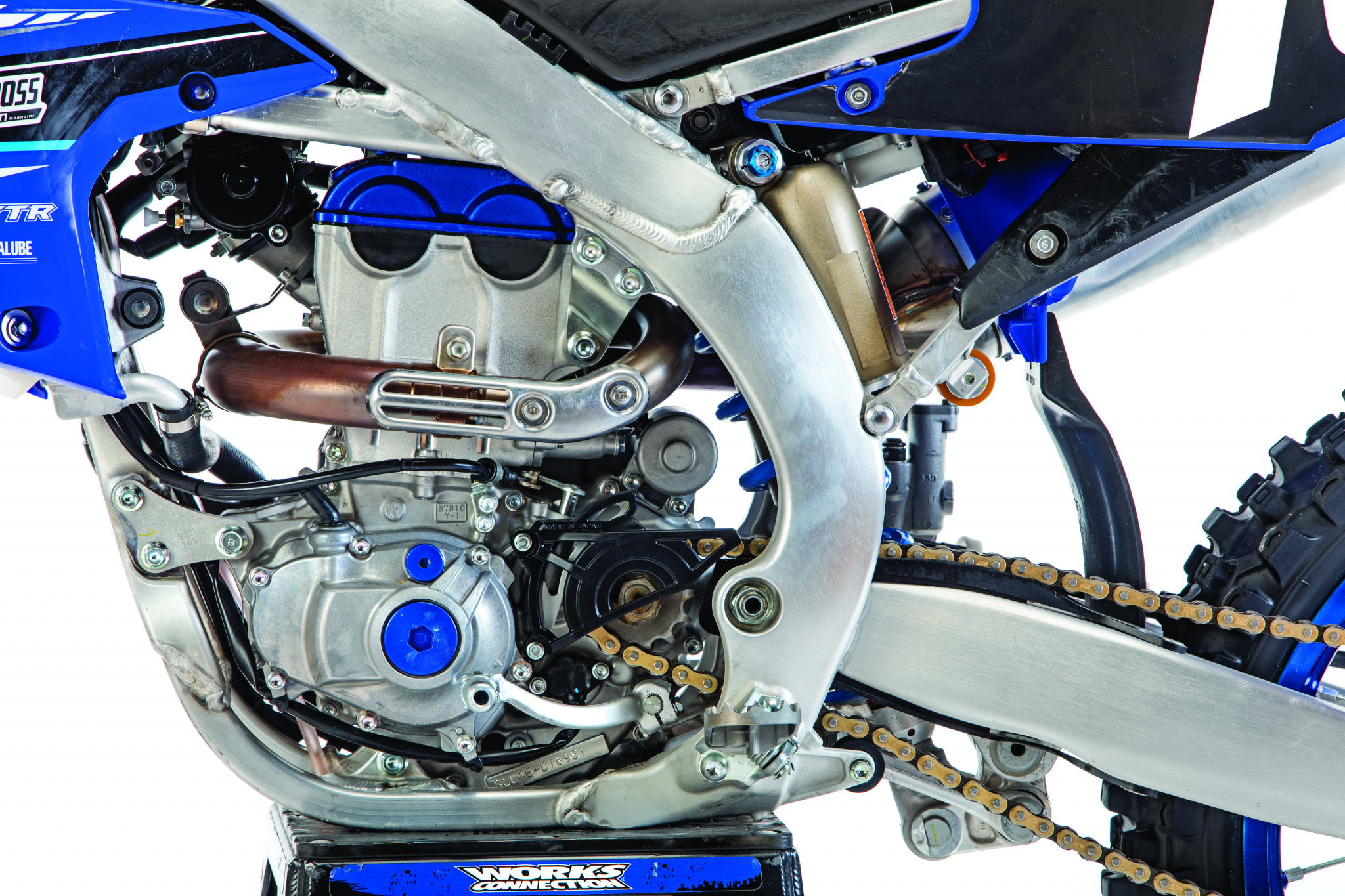
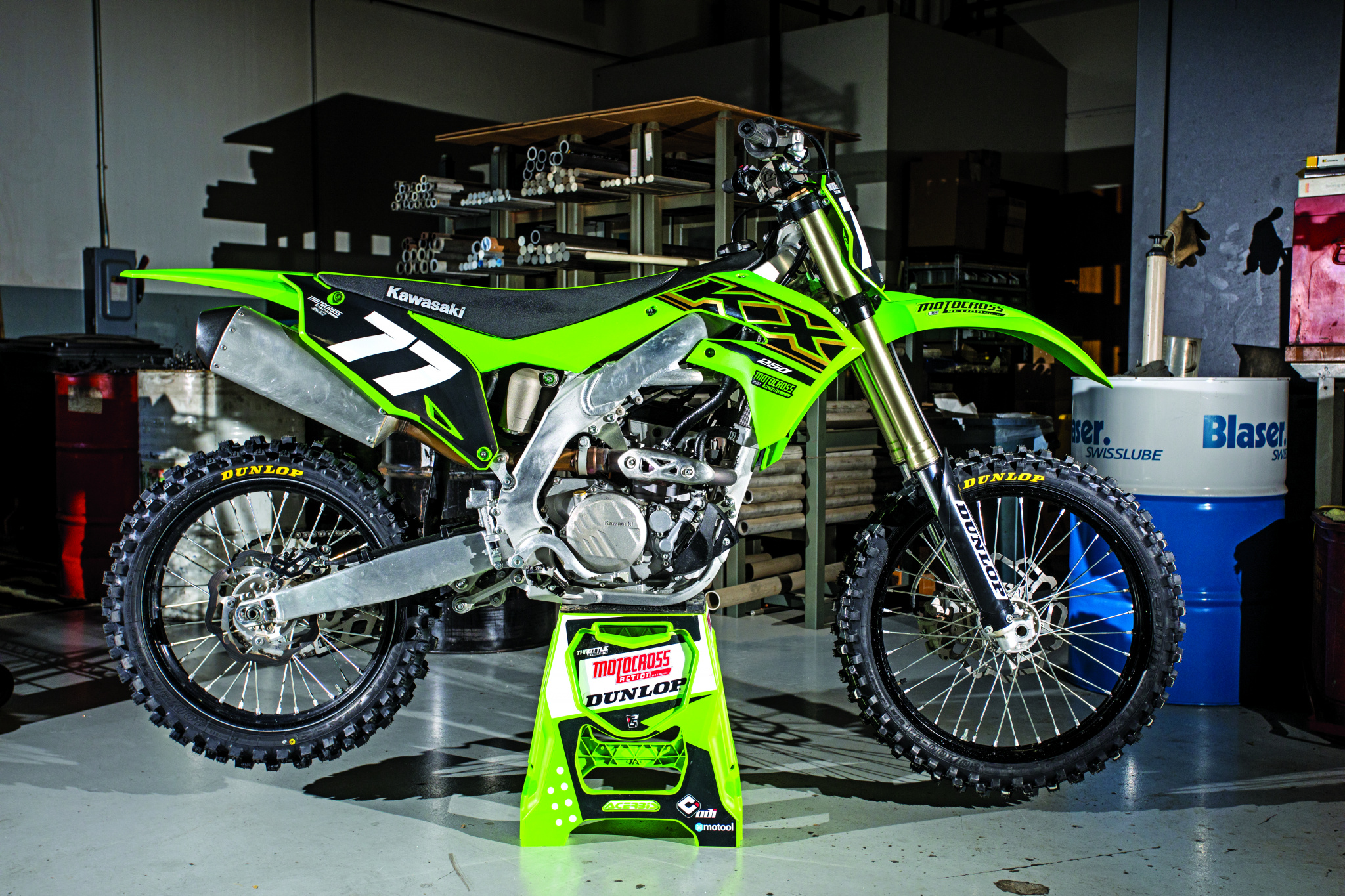
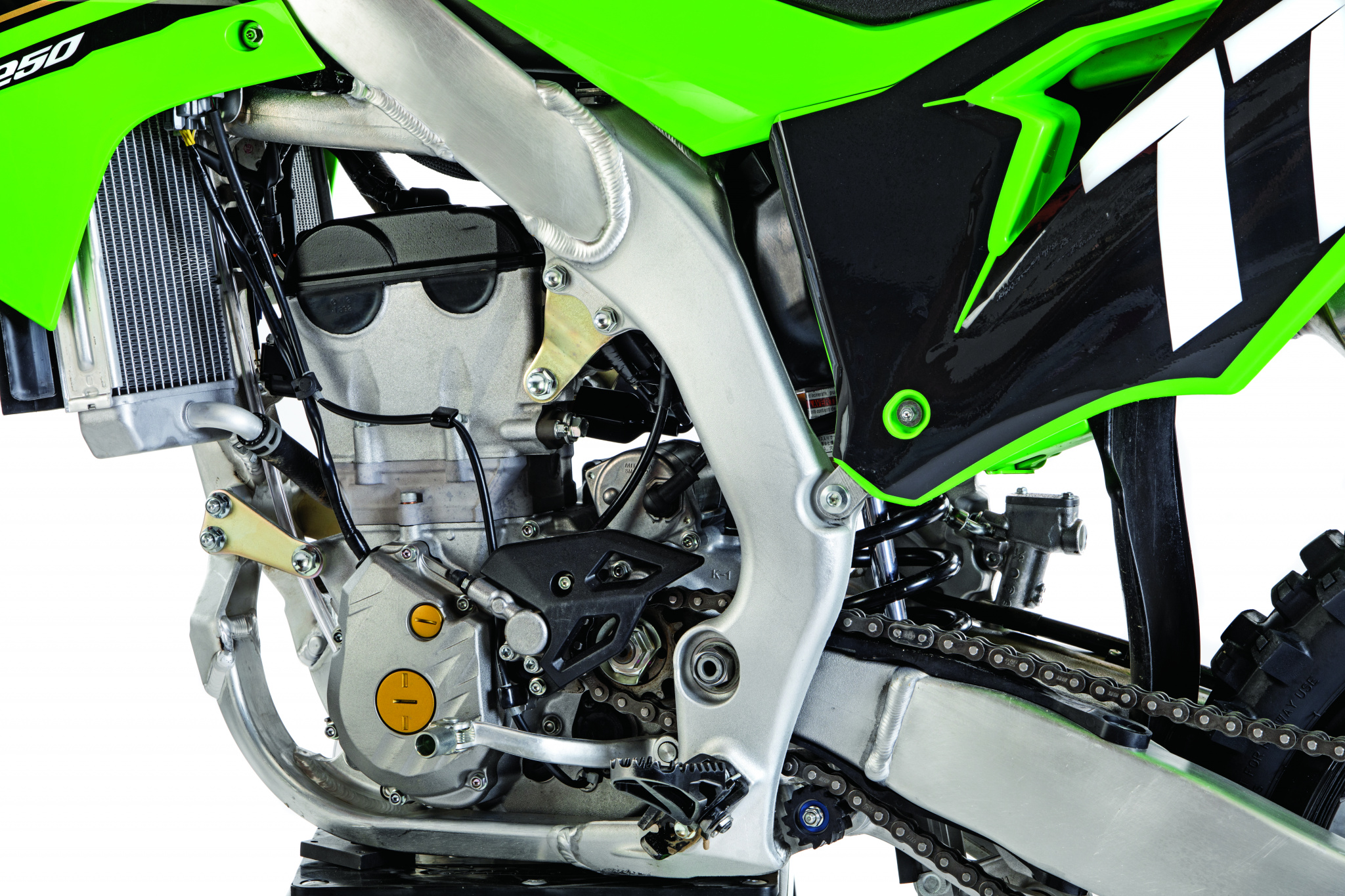
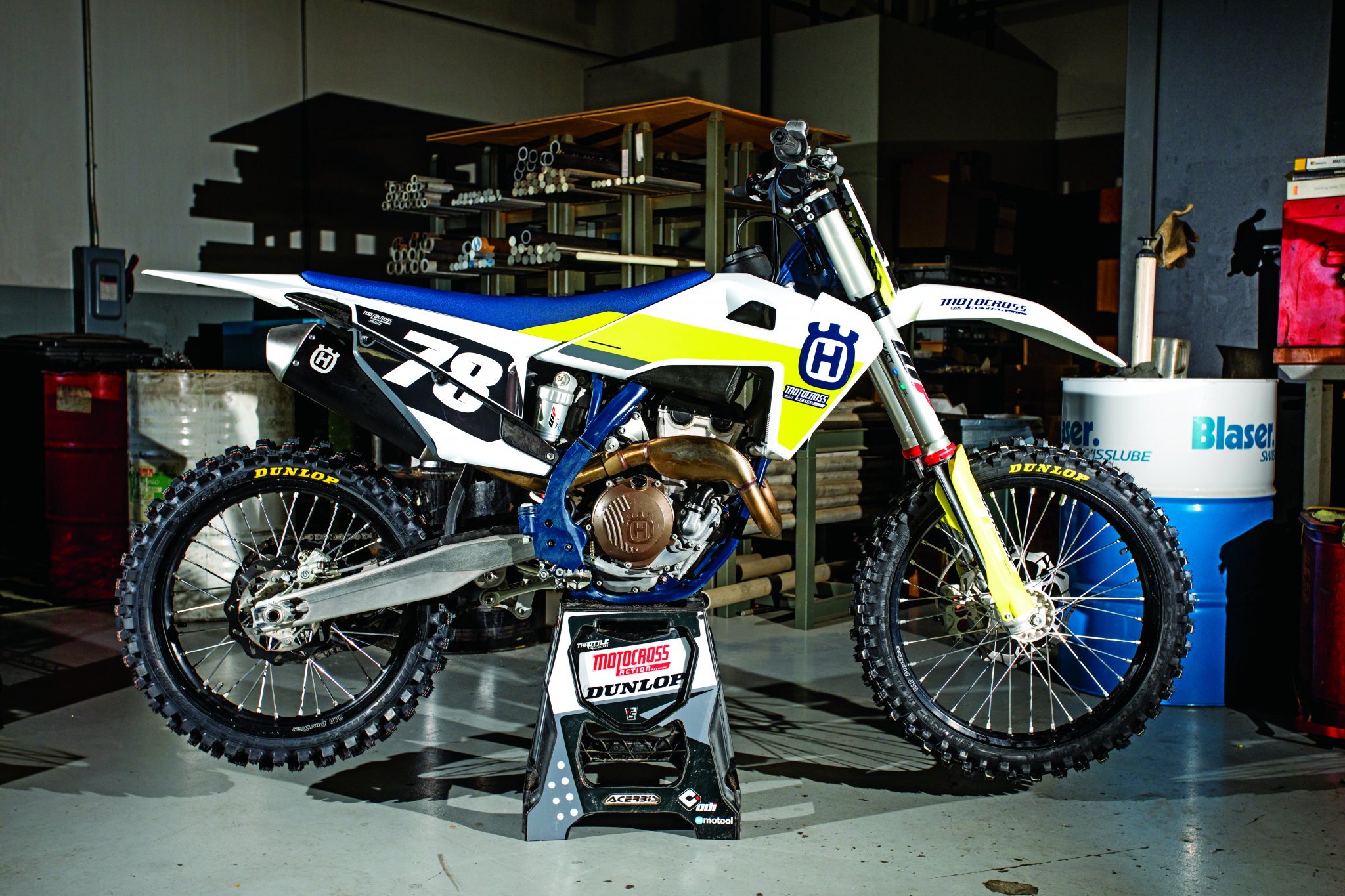

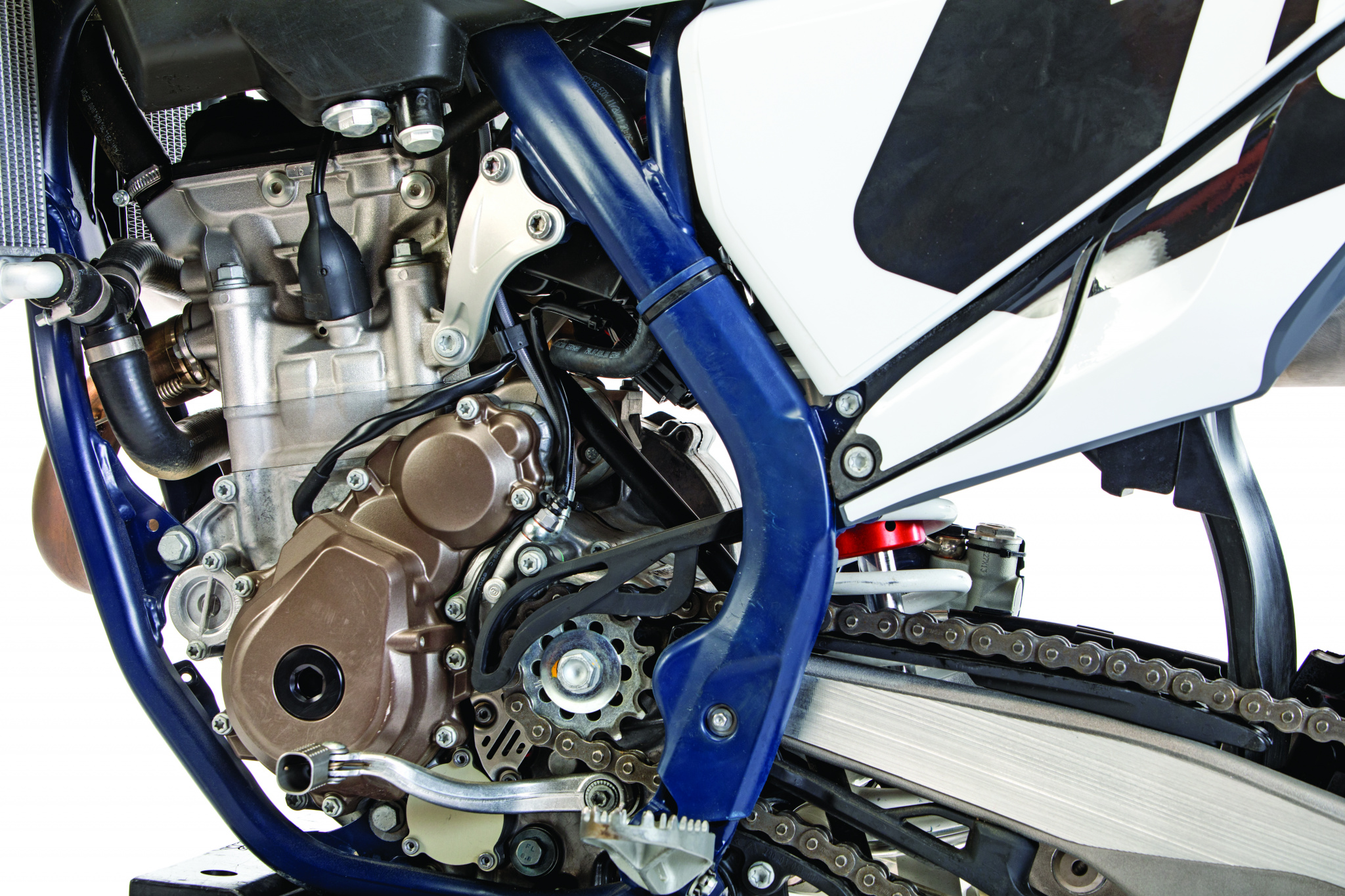
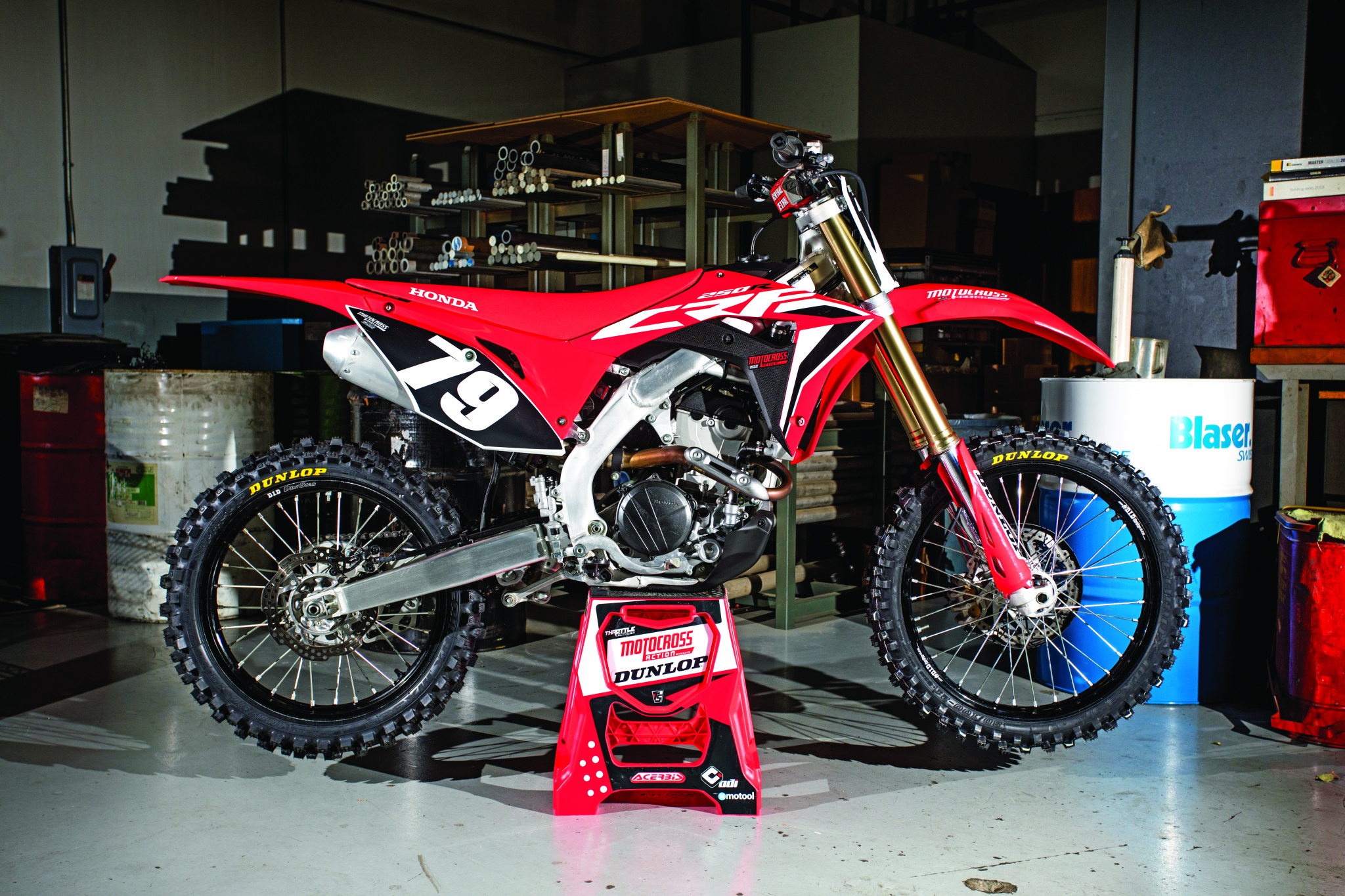
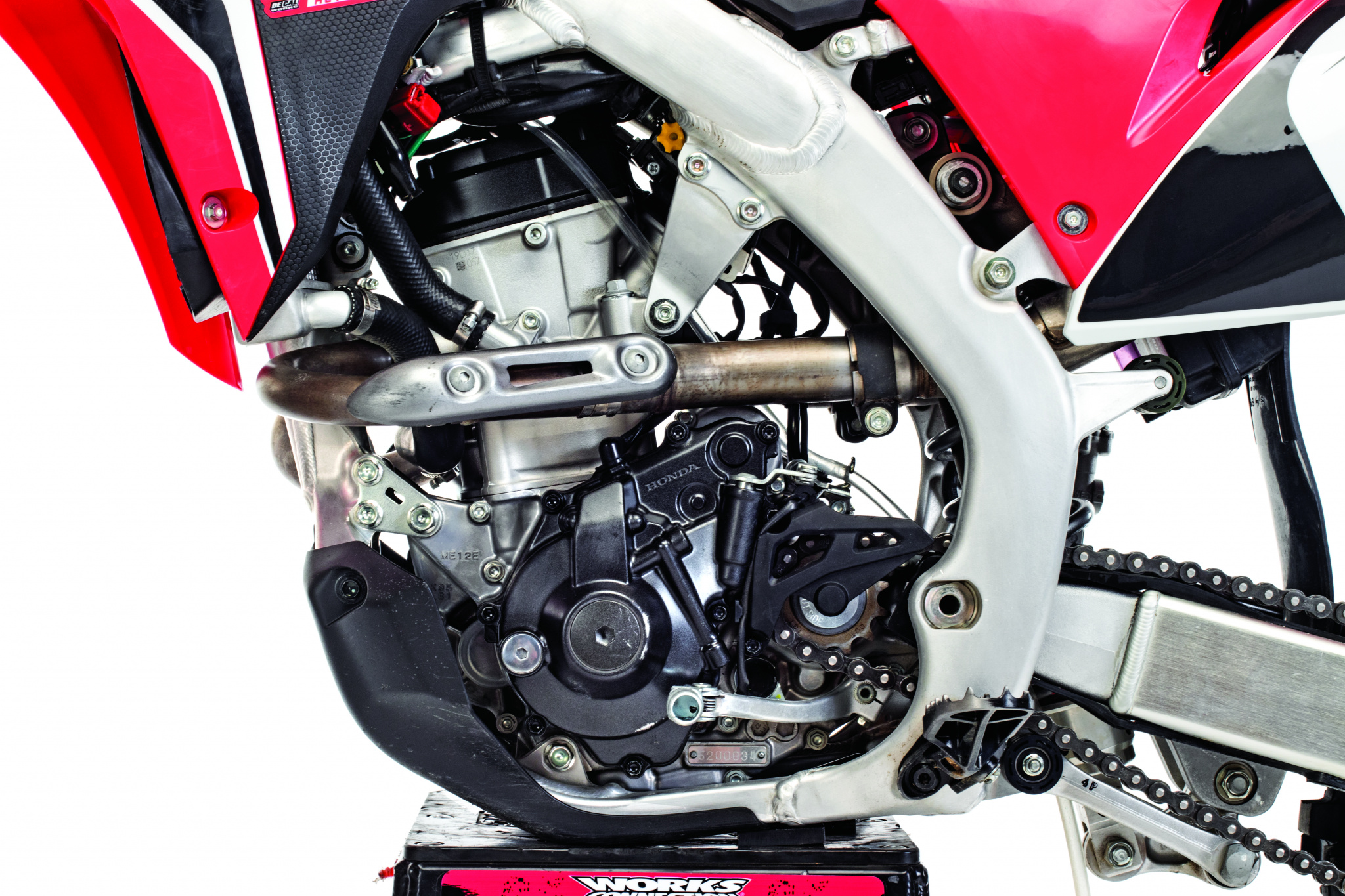
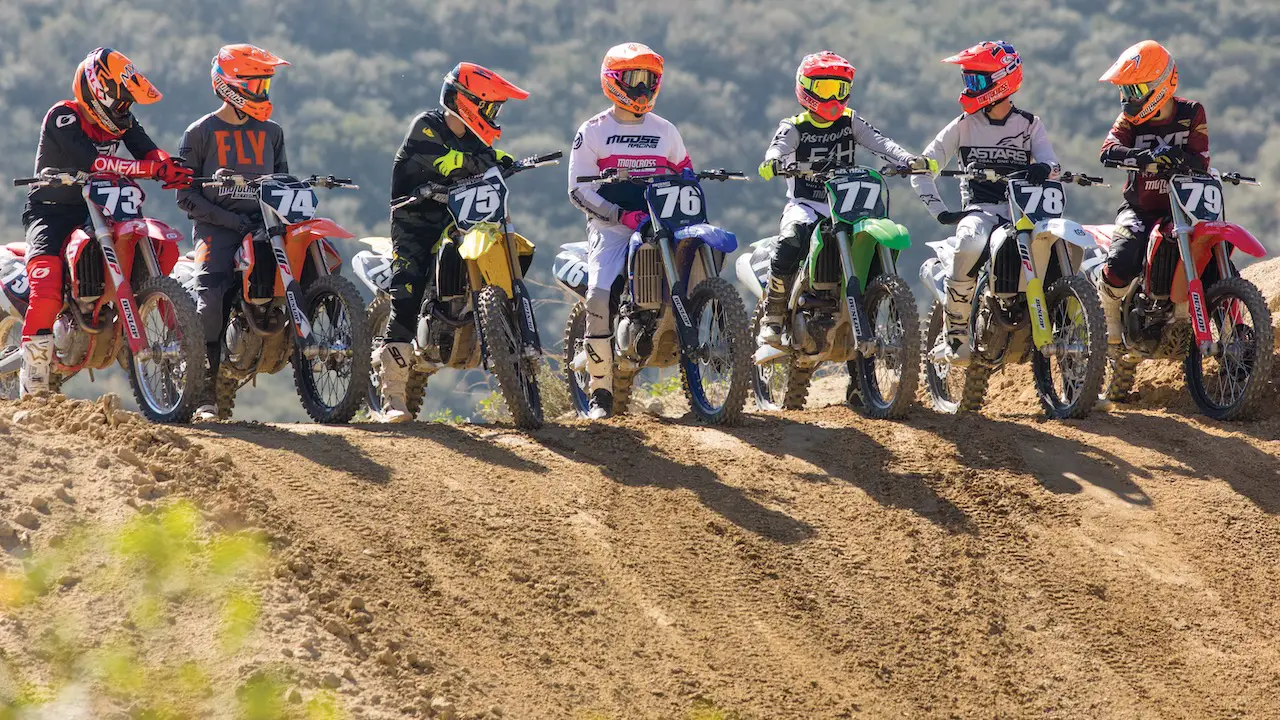

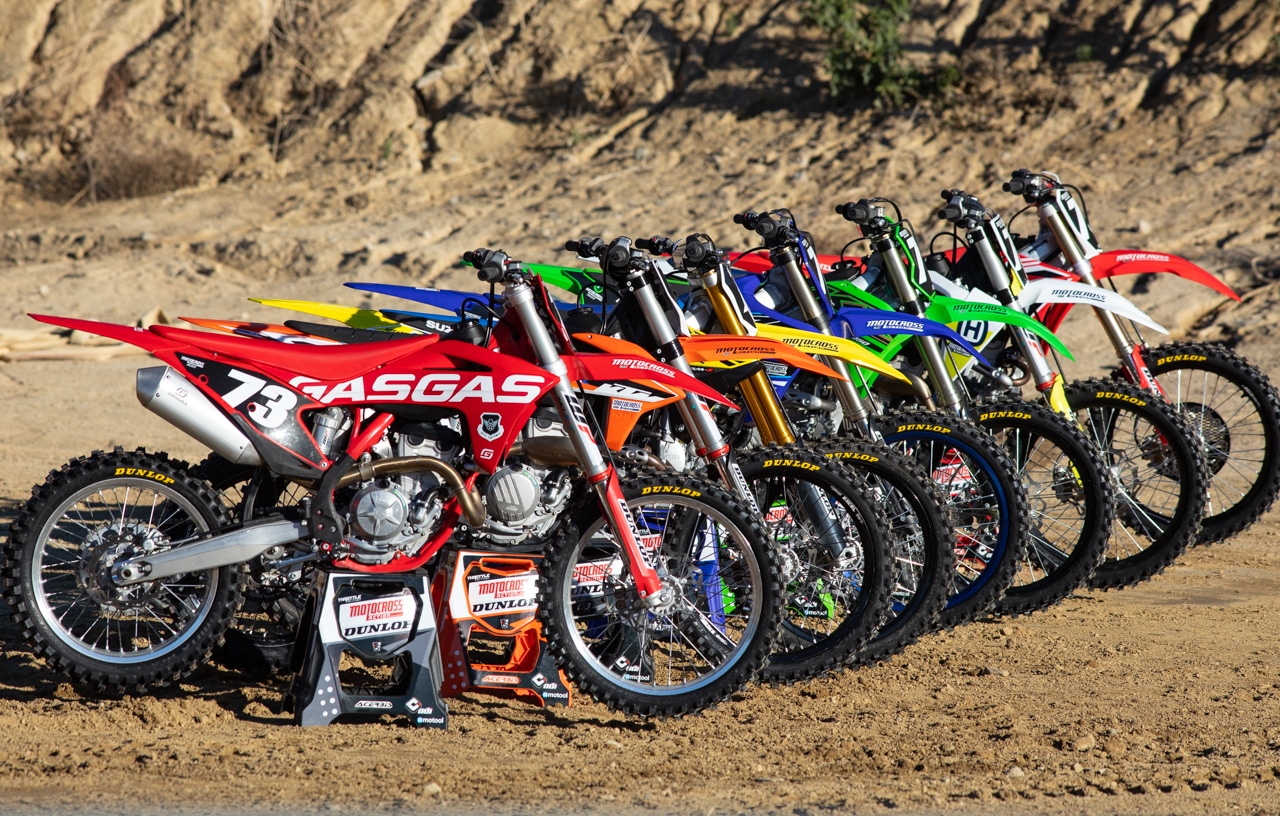
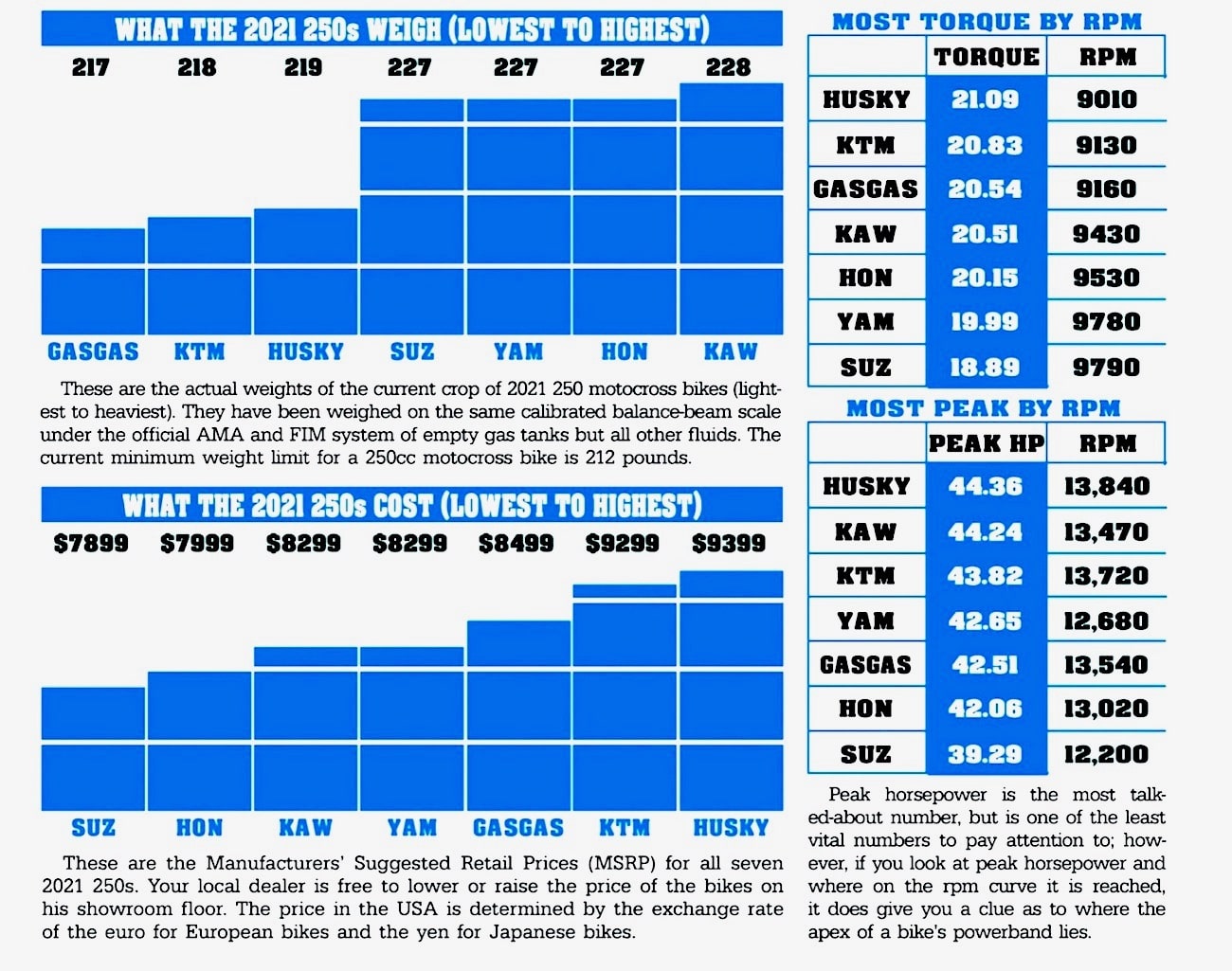
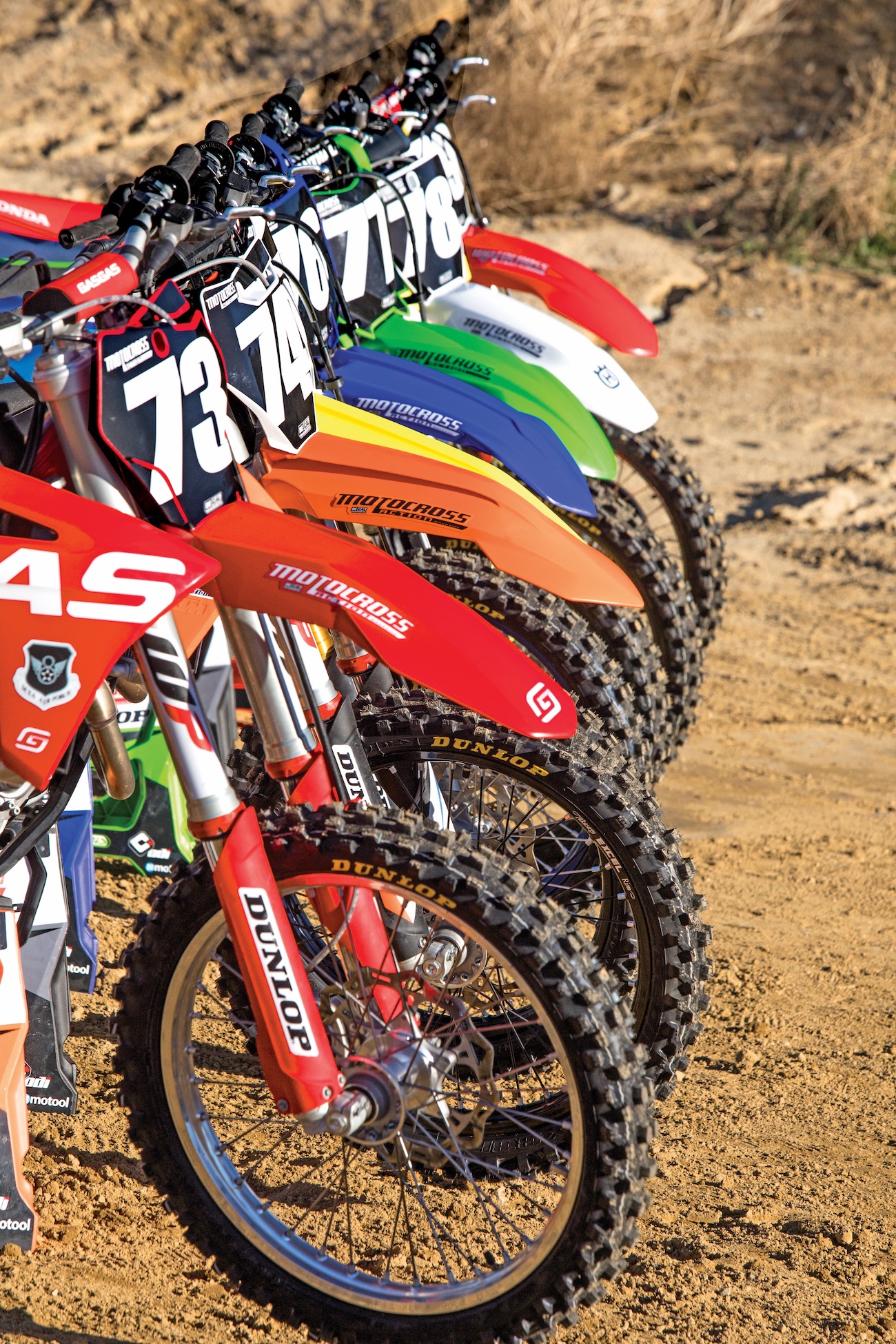

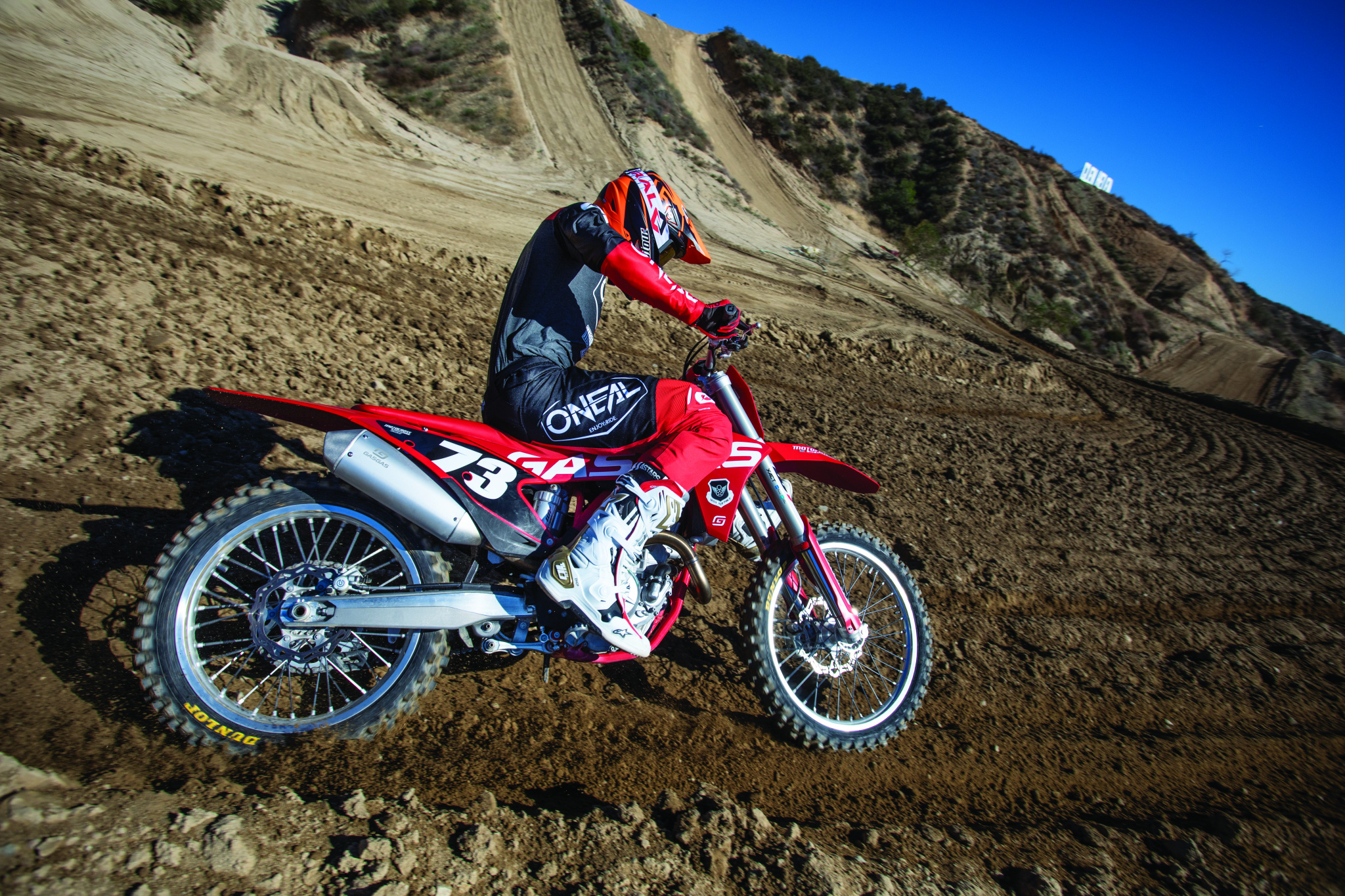
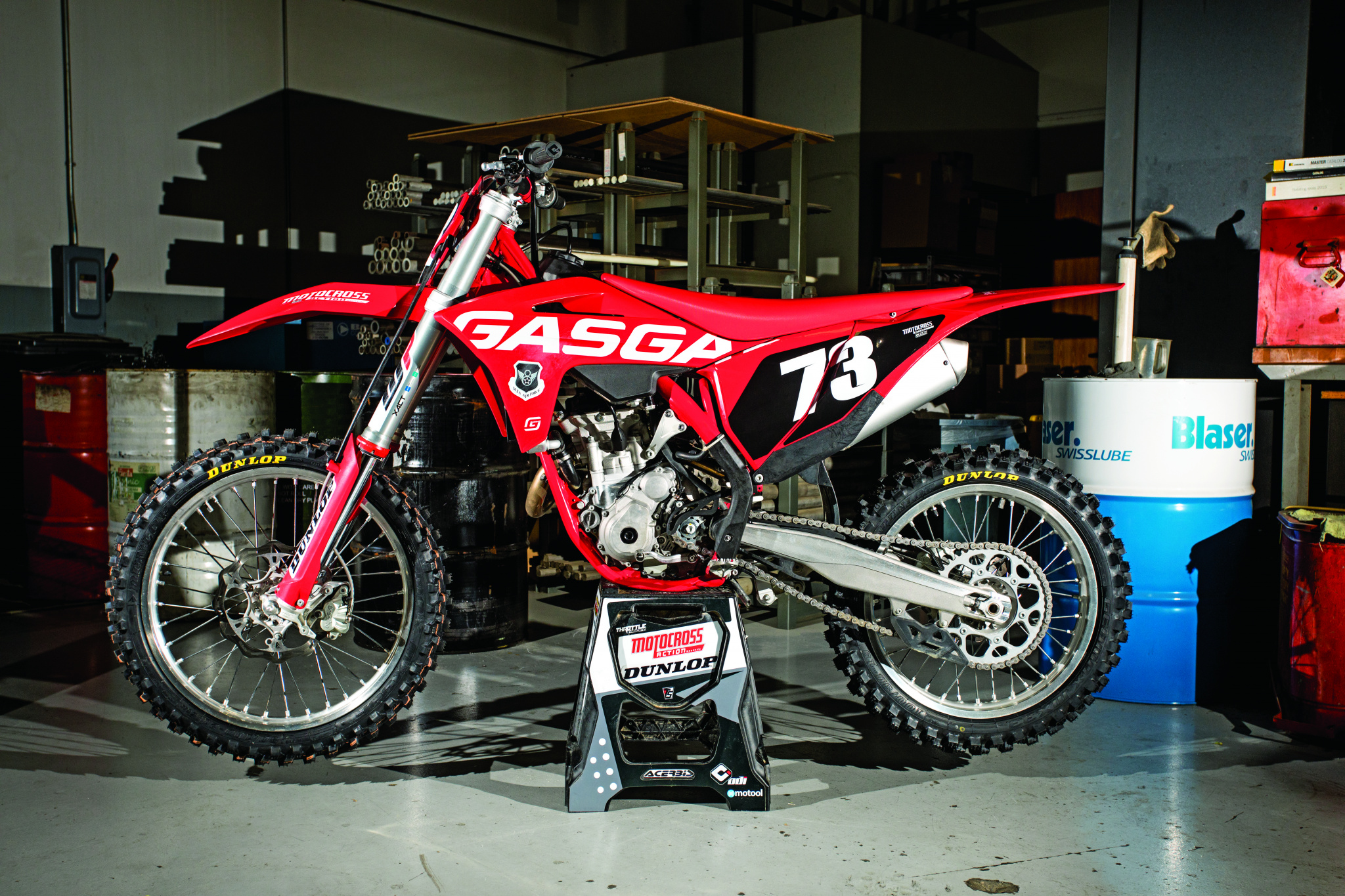
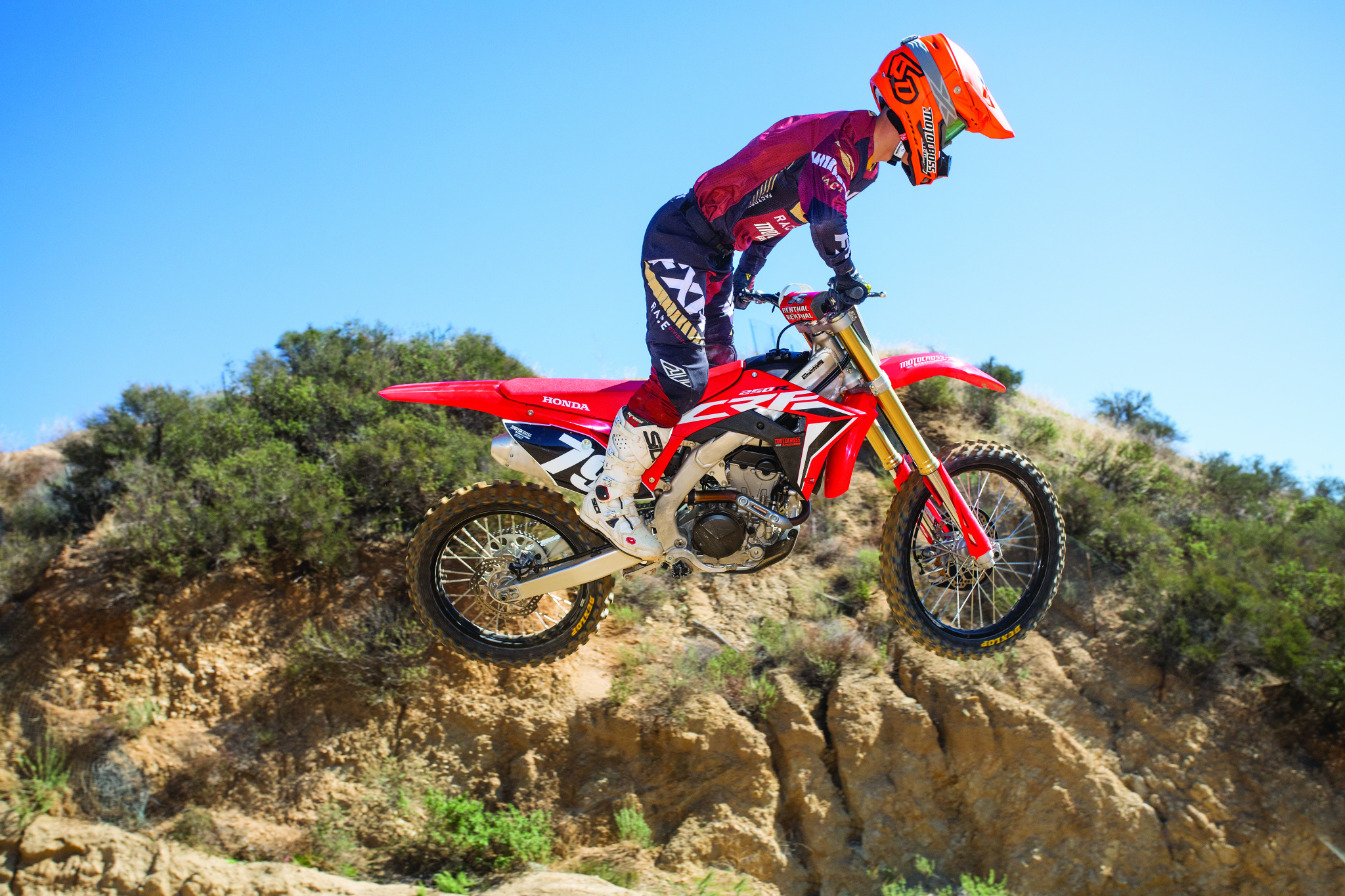
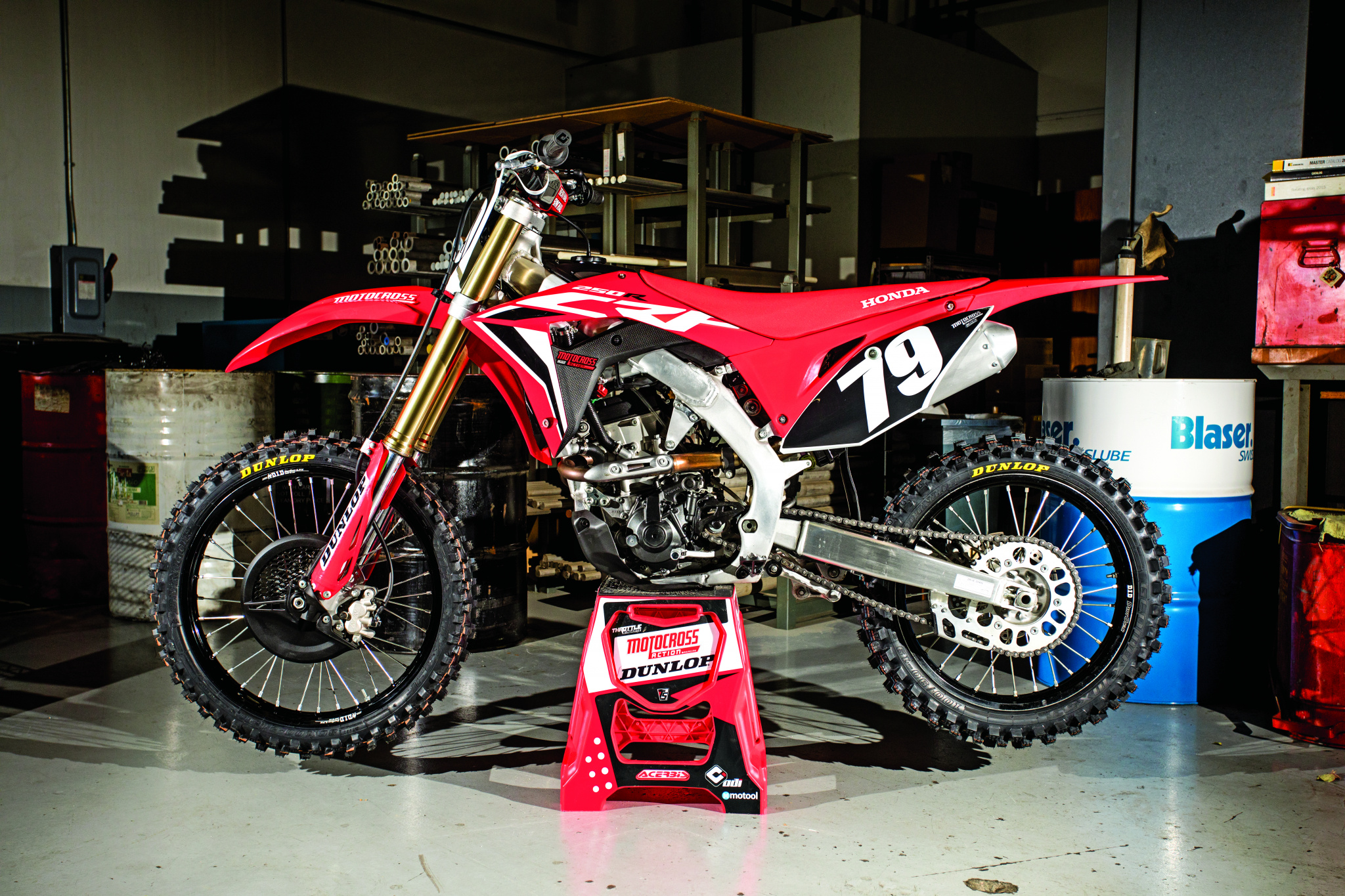
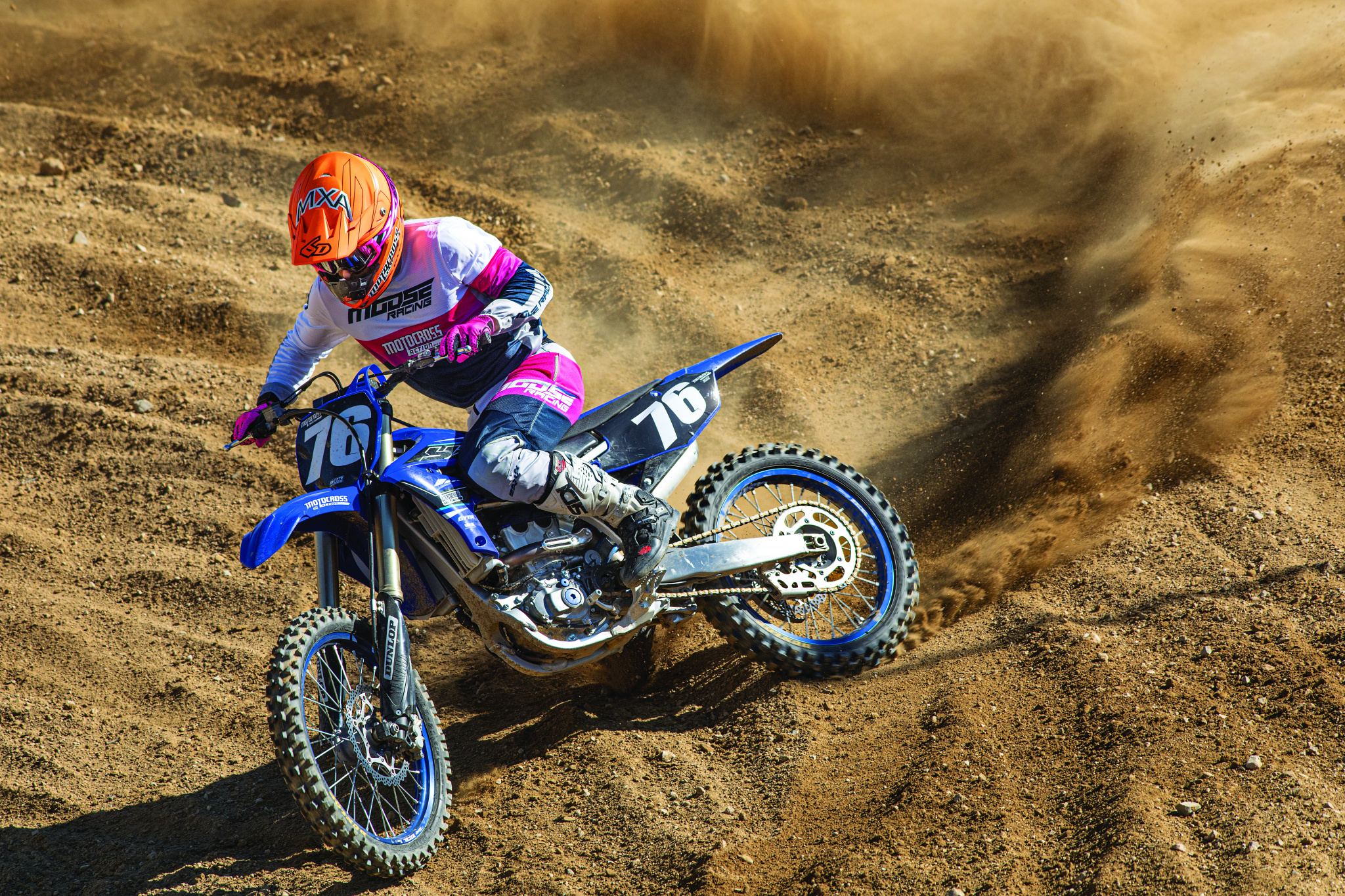
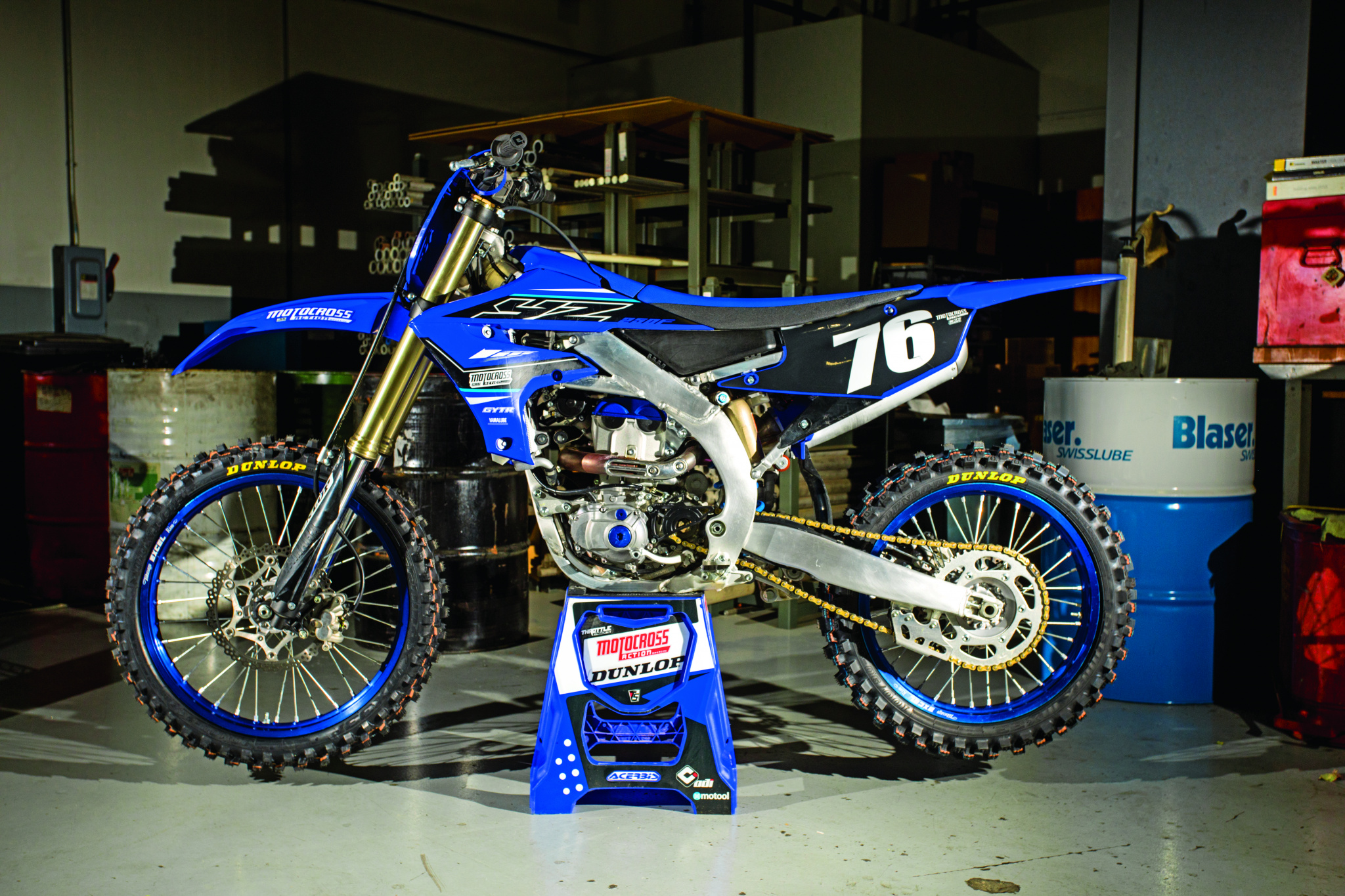
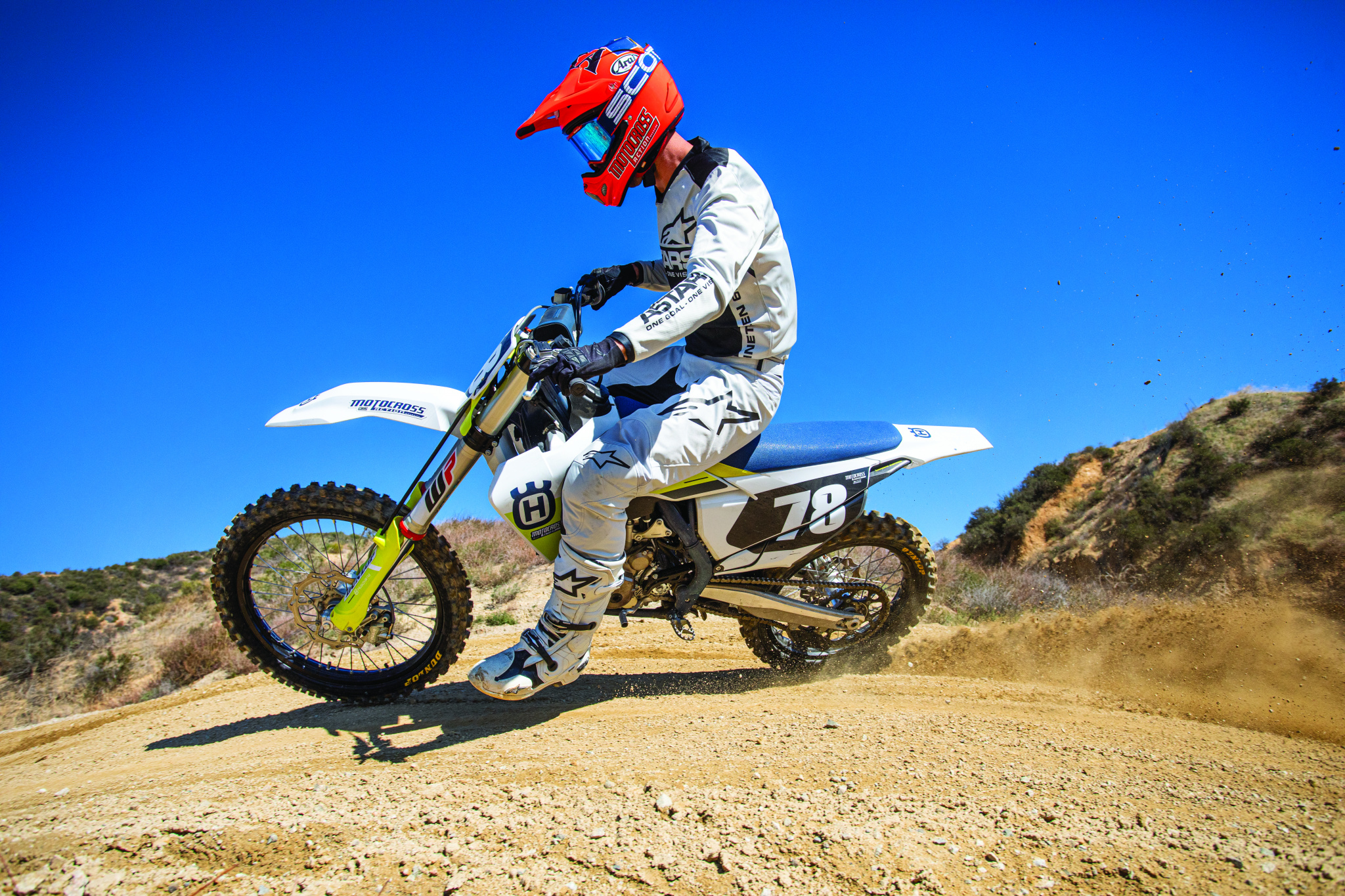
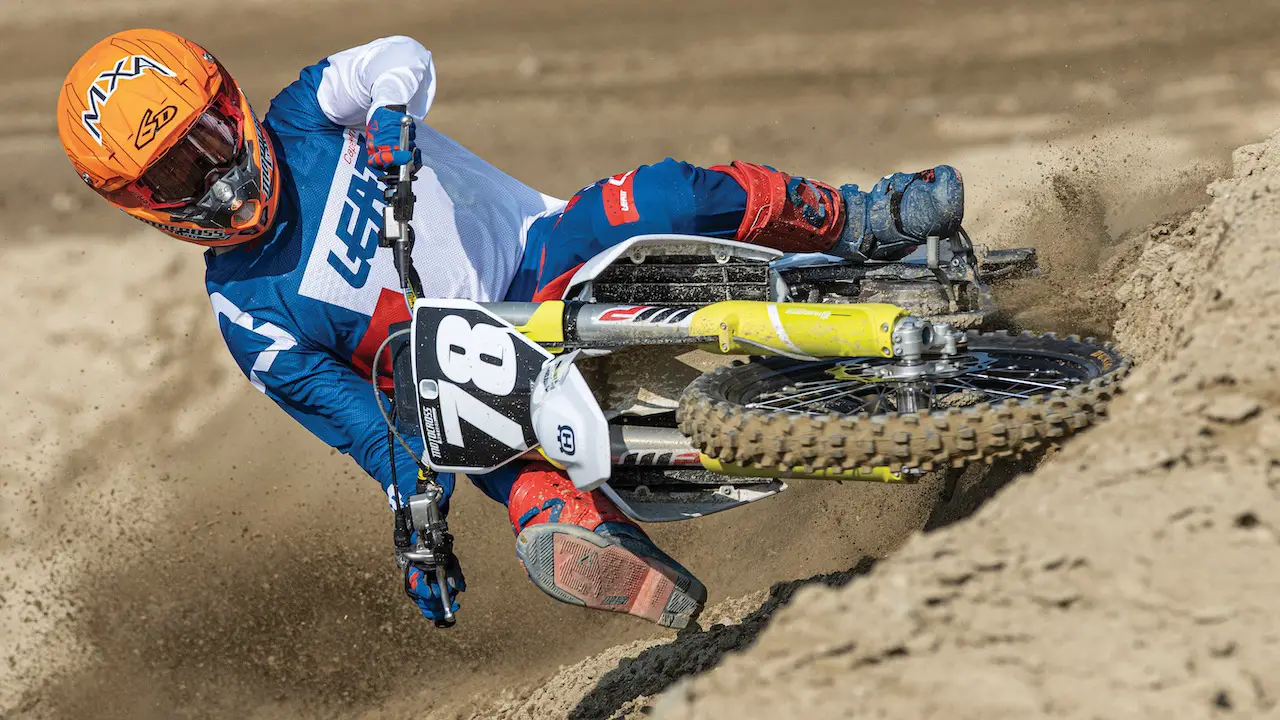
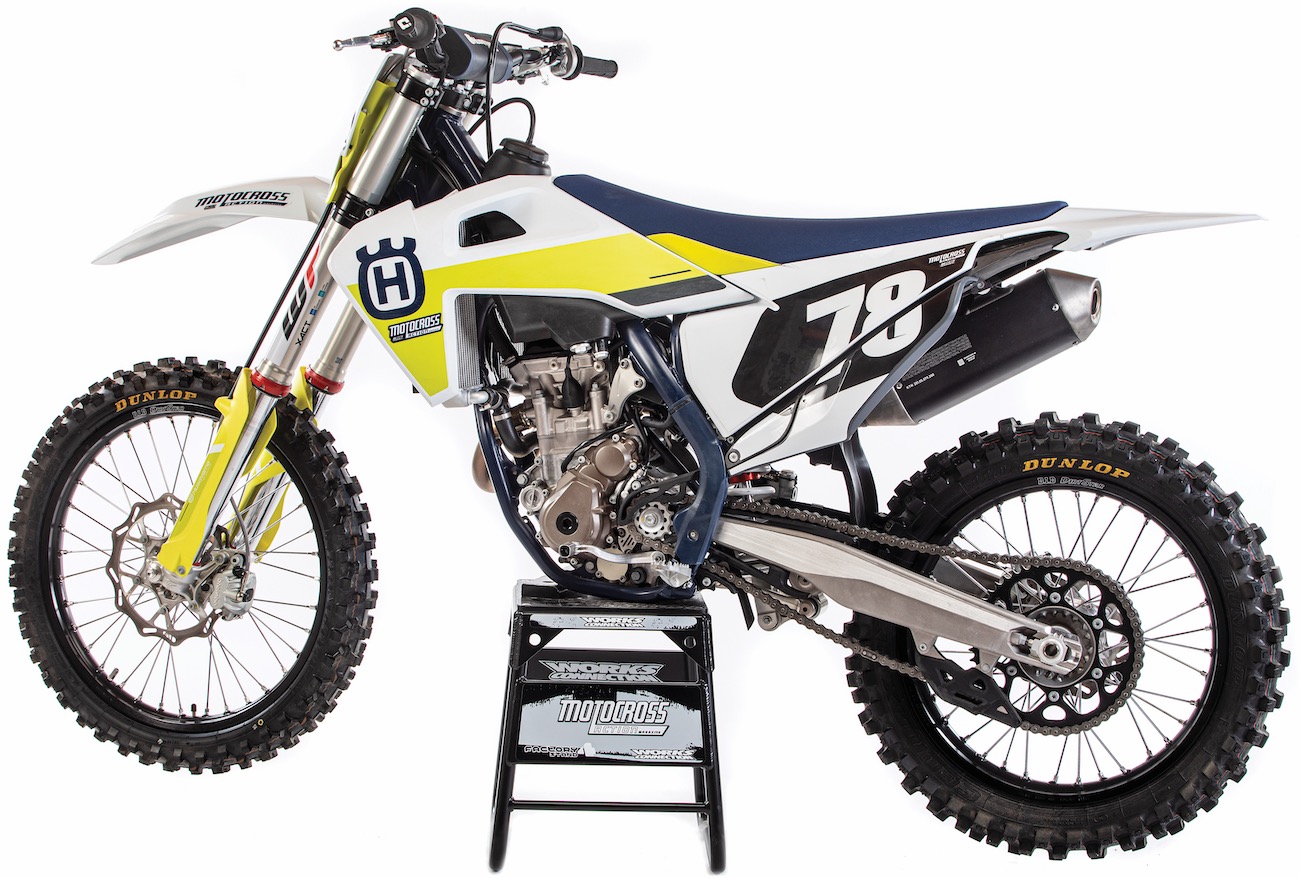



Comments are closed.